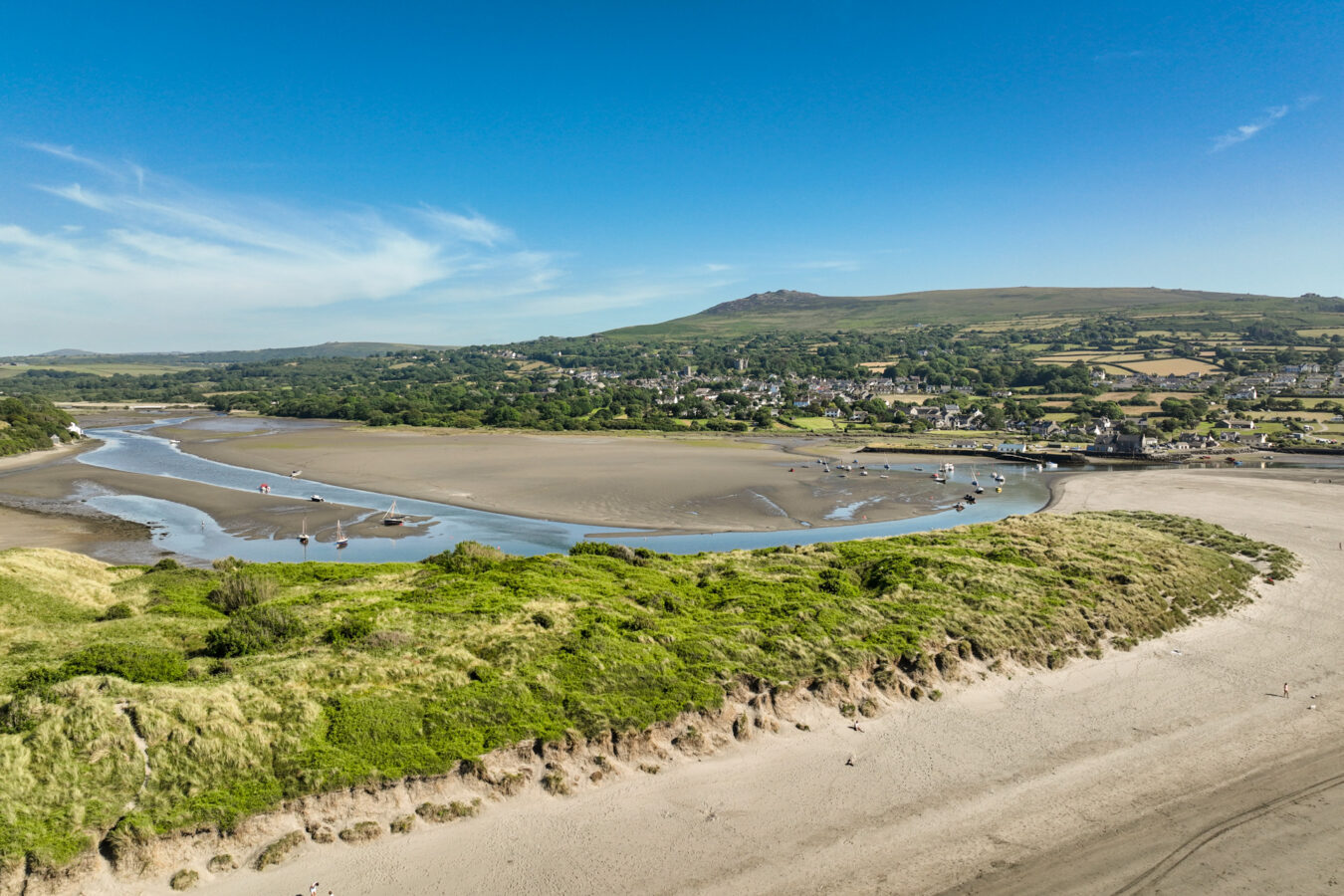Bae Ceredigion, or Cardigan Bay in English, is one of the highlights of any trip to Wales, a beautiful stretch of coast dotted with gorgeous beaches and adorable seaside towns and villages. Stretching all the way from Gwynedd in the North to Pembrokeshire in the South, it’s a haven for wildlife like seals, puffins, and porpoises, as well as being where you’ll find many of the country’s most iconic attractions. Ceredigion, the county in which most of Cardigan Bay sits, is also a great part of the country for the strength of Welsh culture and language.
Whether you prefer scenic hikes, educational landmarks, or sporting activities like surfing and canoeing, this gorgeous area is more than likely to have what you’re looking for. There’s also plenty of really nice accommodation to be found along the coast, as even the smallest towns have strong tourist industries.
In the first of two articles covering Cardigan Bay, we highlight the places to visit and stay in the southern area.

Please note that our list is arranged in geographical order from south to north.
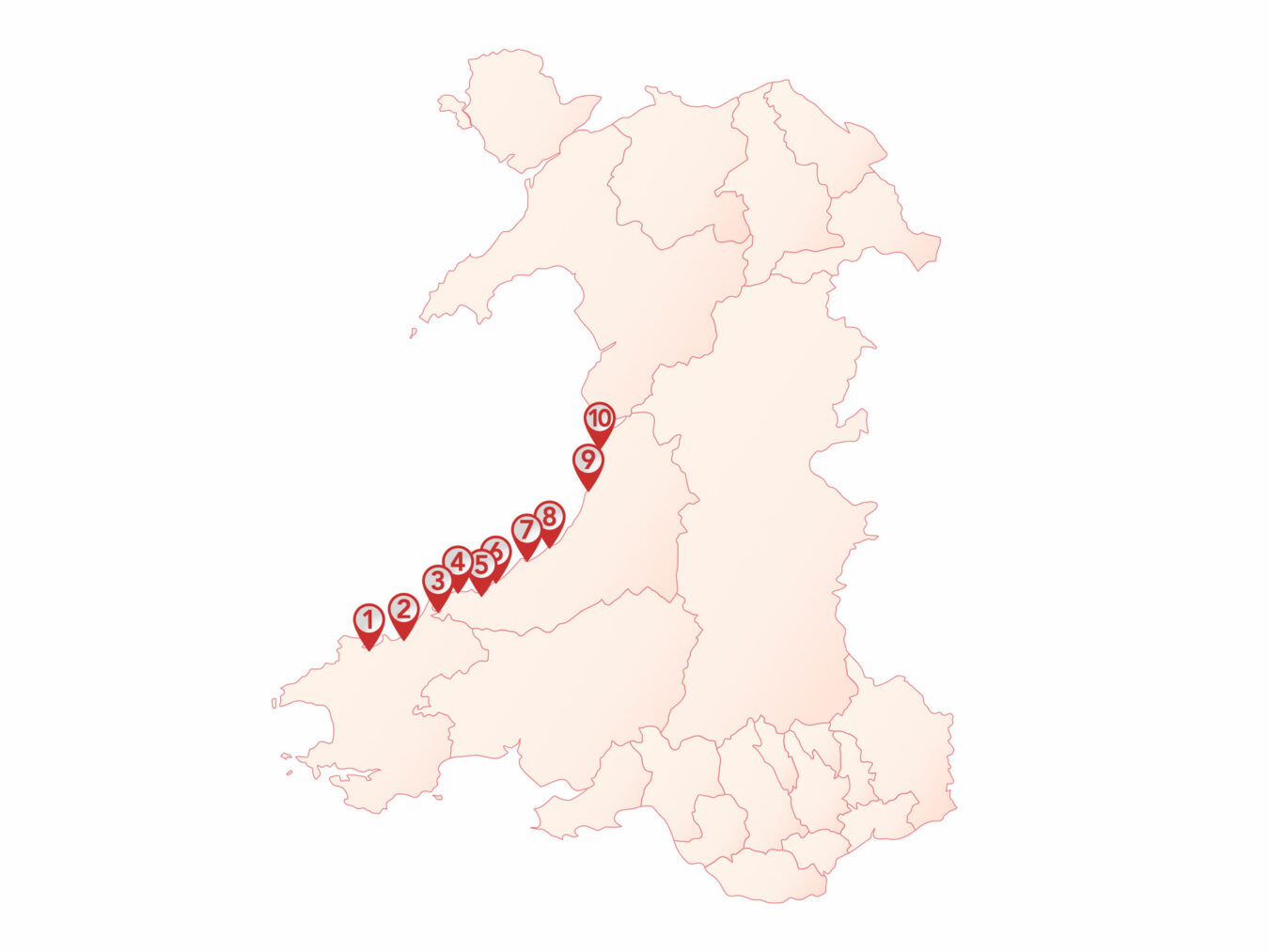
Credits
Photos of Mwnt, and Aberaeron, as well as select photos of Newport Sands (aerial), New Quay (aerial view, dolphins) and Borth (submerged forest at sunset), are from the Wales Asset database. © Hawlfraint y Goron / © Crown copyright (2022) Cymru Wales. Additional credits can be found on individual photos.
All the other remaining photos are property of Mathieu Gasquet / We Travel Wales.
Article written by Nia Bolland with contribution from Mathieu Gasquet.
#1 – Fishguard
Welsh name: Abergwaun, meaning ‘Mouth of the [river] Gwaun’
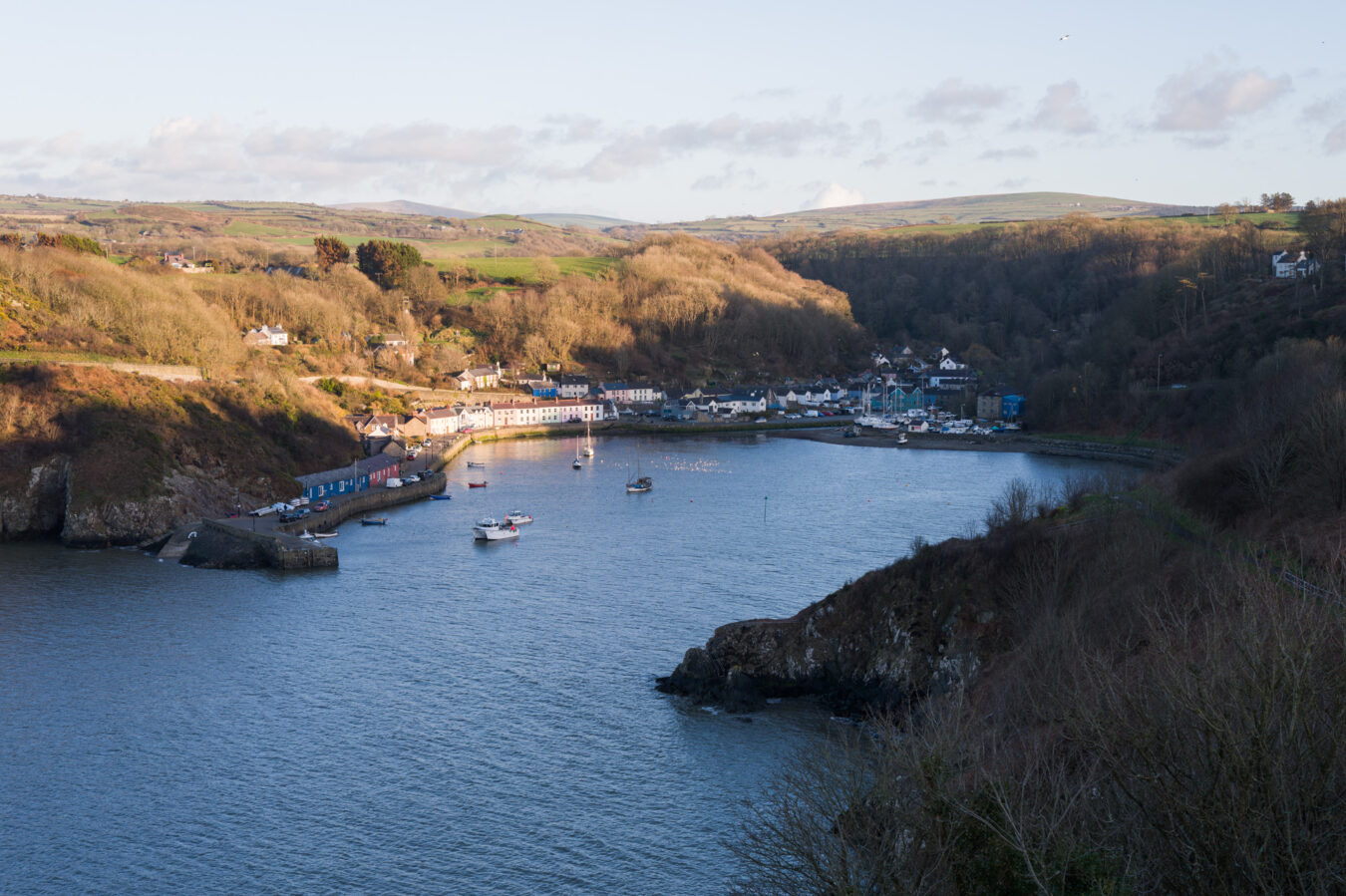
See Fishguard on
Google Maps | Apple Maps
Public transport
- Marches train line (Cardiff)
- T5 bus (Aberystwyth – Haverfordwest)
- T11 (St. Davids, Haverfordwest)
Fishguard is not the first place you’ll see featured in many articles of this kind, most likely because it doesn’t have a large golden-sand beach like some other locations, and its connection to the ferry port might make you think there isn’t much else to see. However, I was pleasantly surprised by how interesting this coastal town is when I visited.
Located in the north of Pembrokeshire, Fishguard consists of two parts. There is the Lower Town, a peaceful and tranquil seaside village with lots of vividly coloured houses (many of which are now holiday cottages). It is the original hamlet from which the modern town grew and lies in a deep valley where the Afon Gwaun meets the sea. There isn’t much here apart from cottages and a few historic pubs, but the upper, more modern part of the town is only a short walk up the hill.
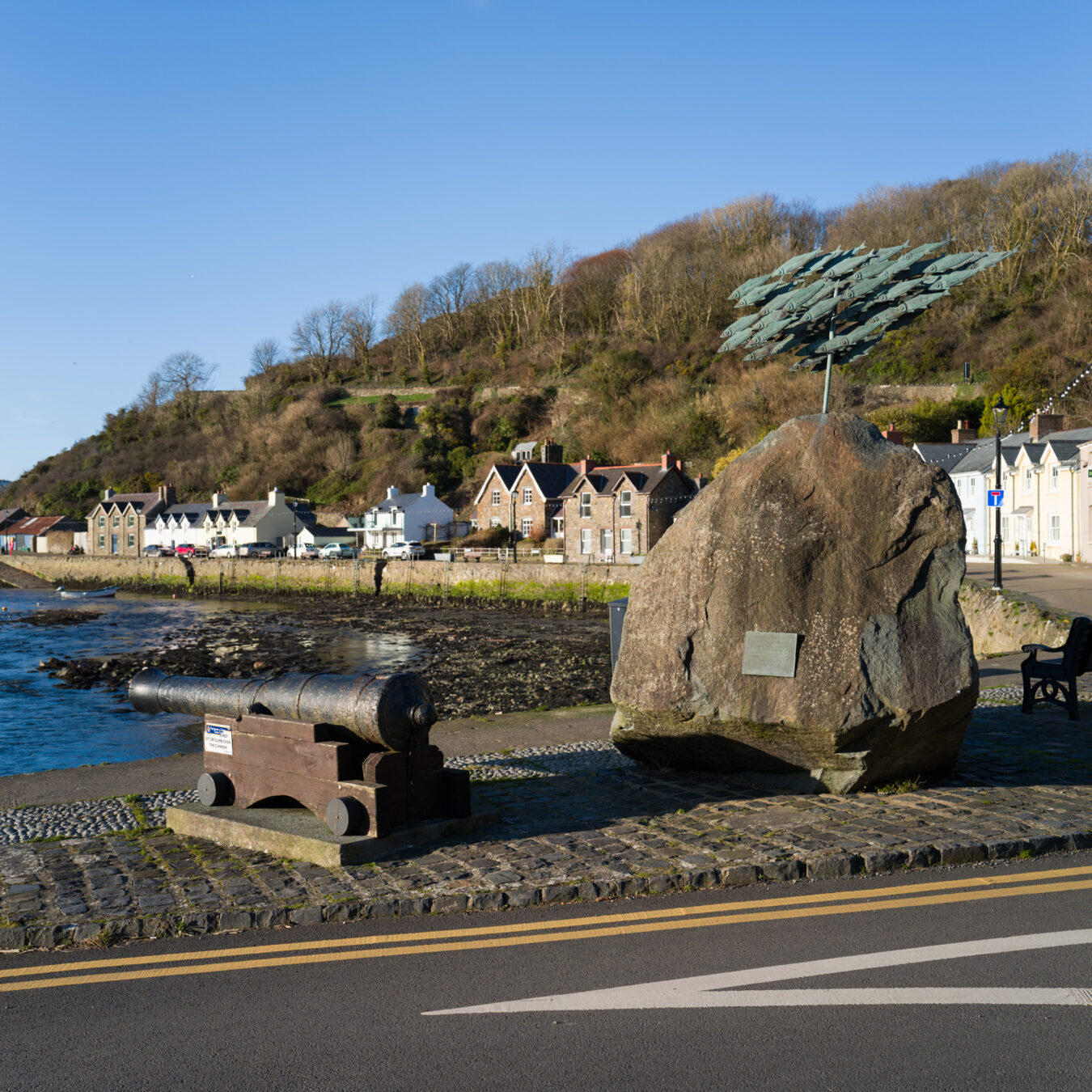
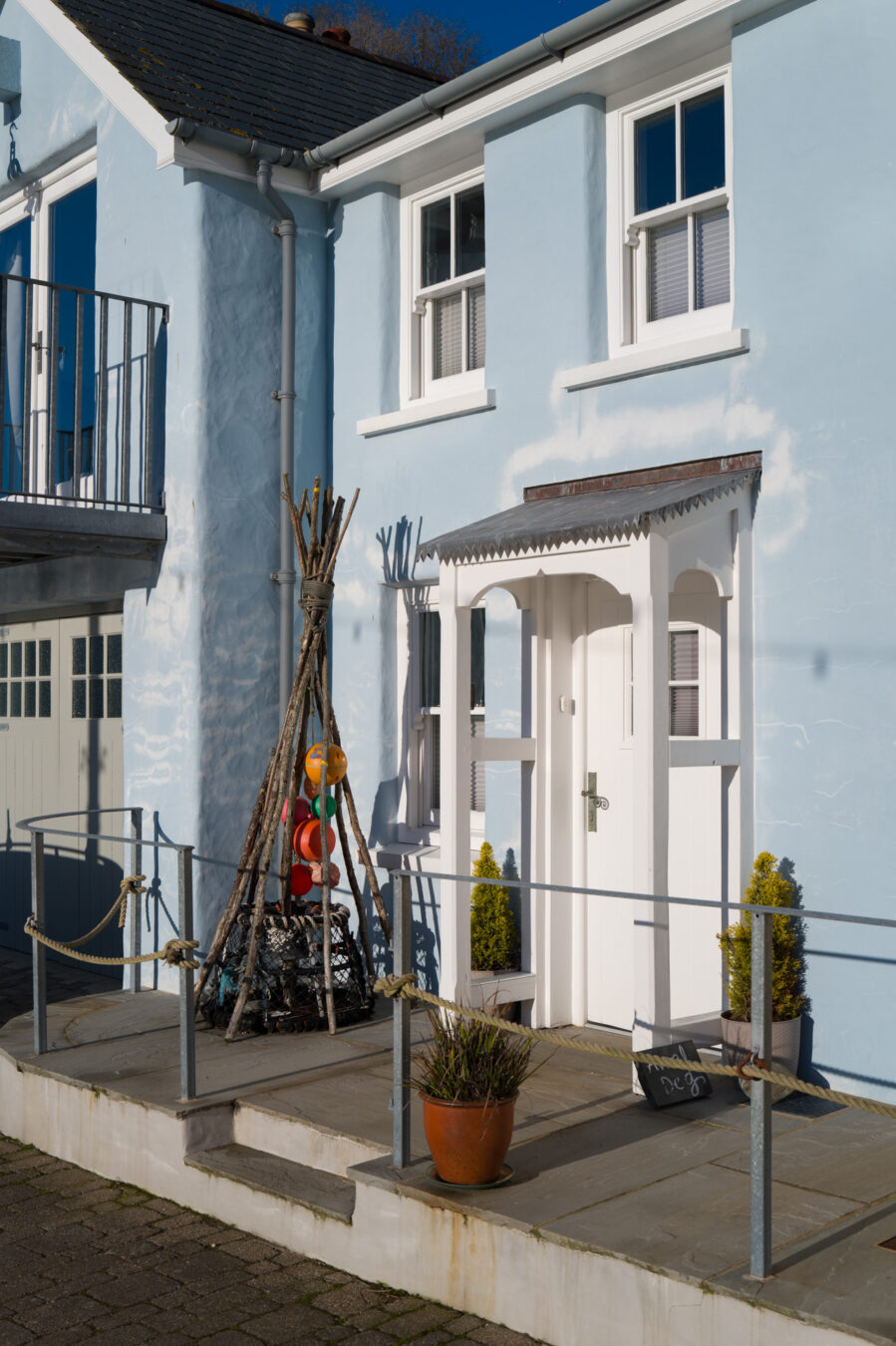
Modern Fishguard offers more of what you would expect to find, including shops and cafés on the High Street, more restaurants, and even an independent cinema, Theatre Gwaun. The town has a vibrant music scene, hosting events such as the AberJazz festival and the Fishguard International Music Festival for classical music lovers.
A panoramic walk, part of the Wales Coast Path, offers stunning views of the Lower Town from above and leads to the other side of Fishguard Bay, where ferries to Ireland arrive and depart. The town also boasts important historical landmarks, such as Fishguard Fort and the Royal Oak pub, where the Peace Treaty was signed after the last invasion of Britain in 1797. The pub has a great atmosphere and serves lovely food.
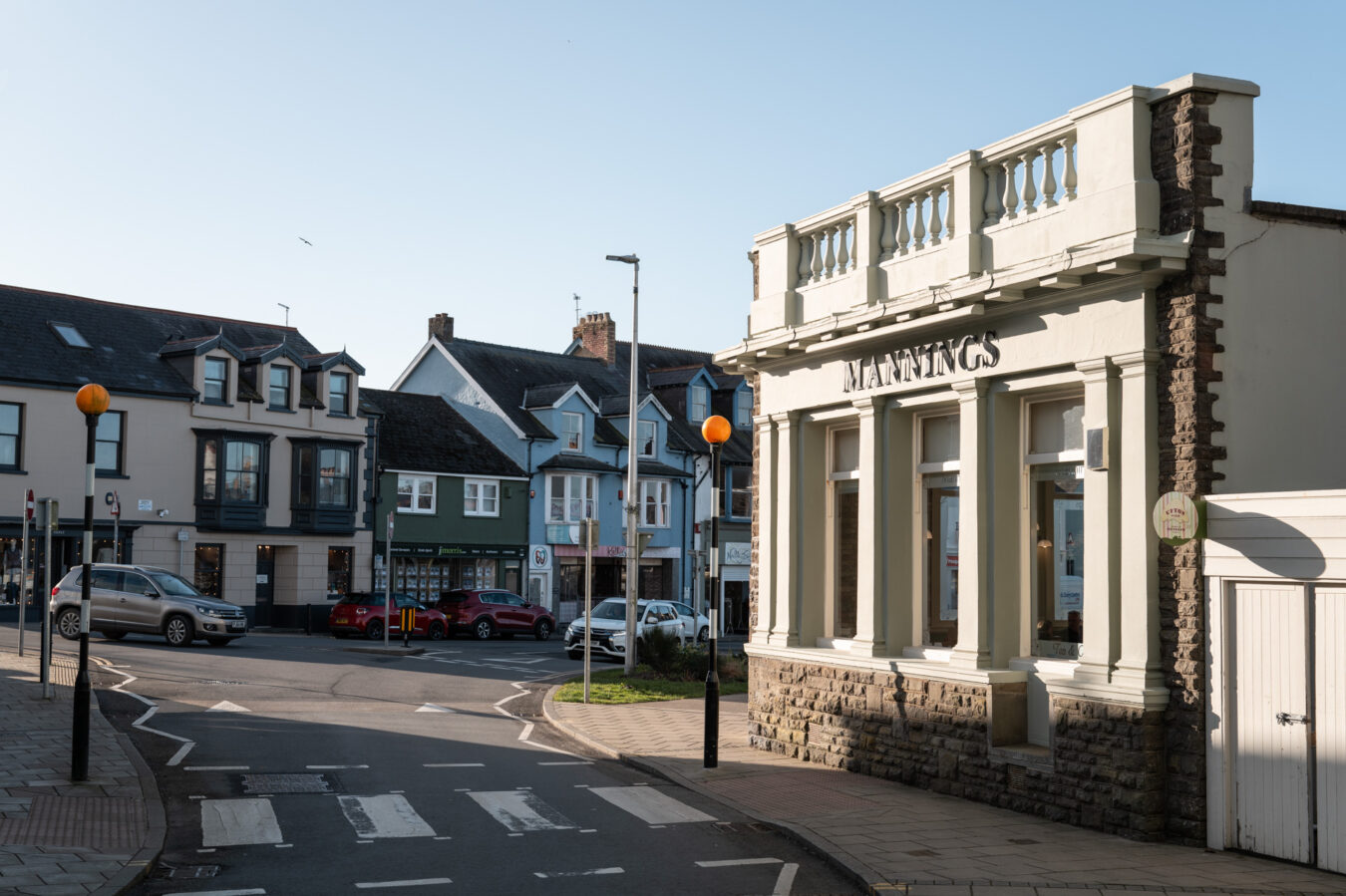
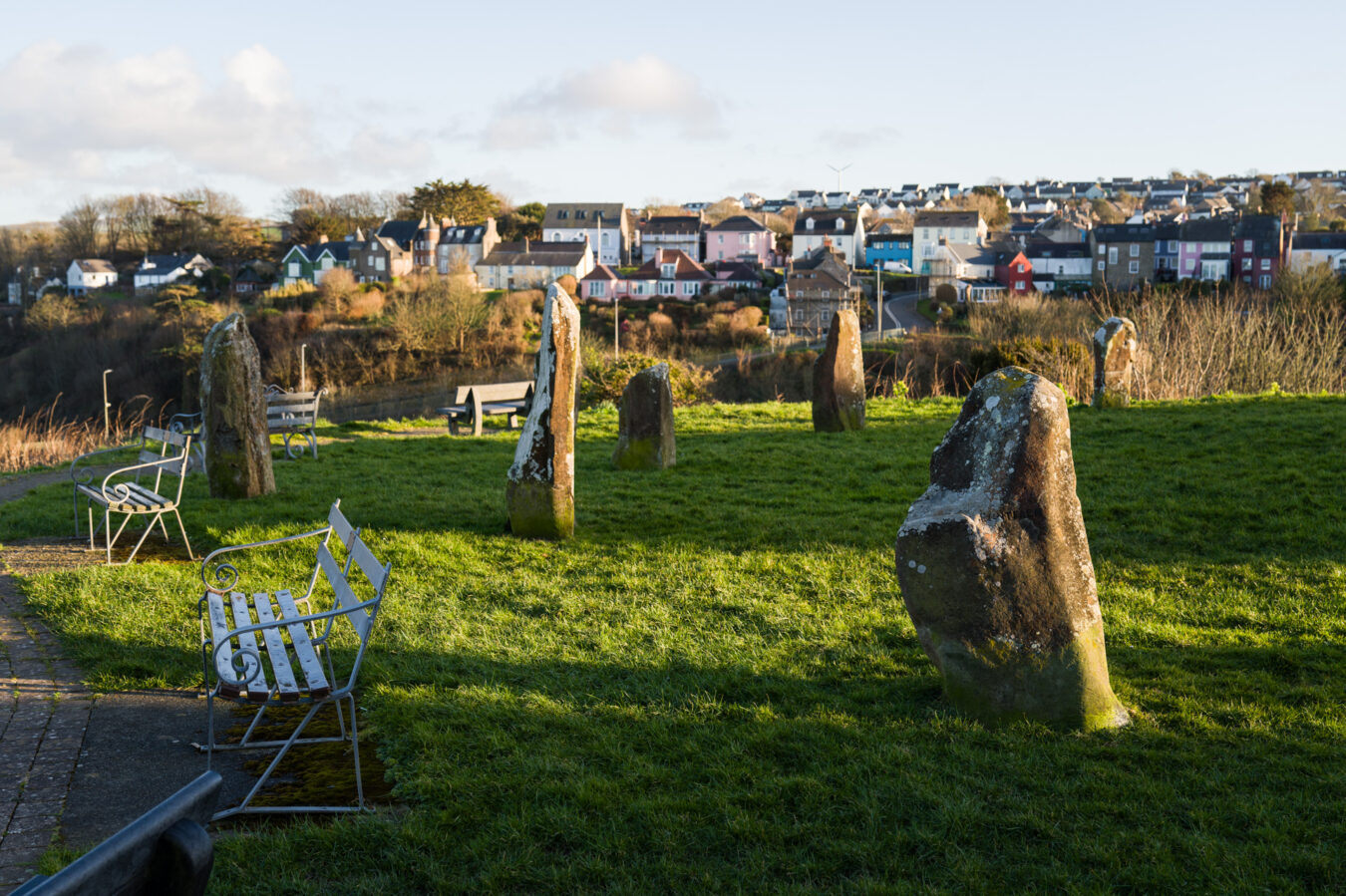
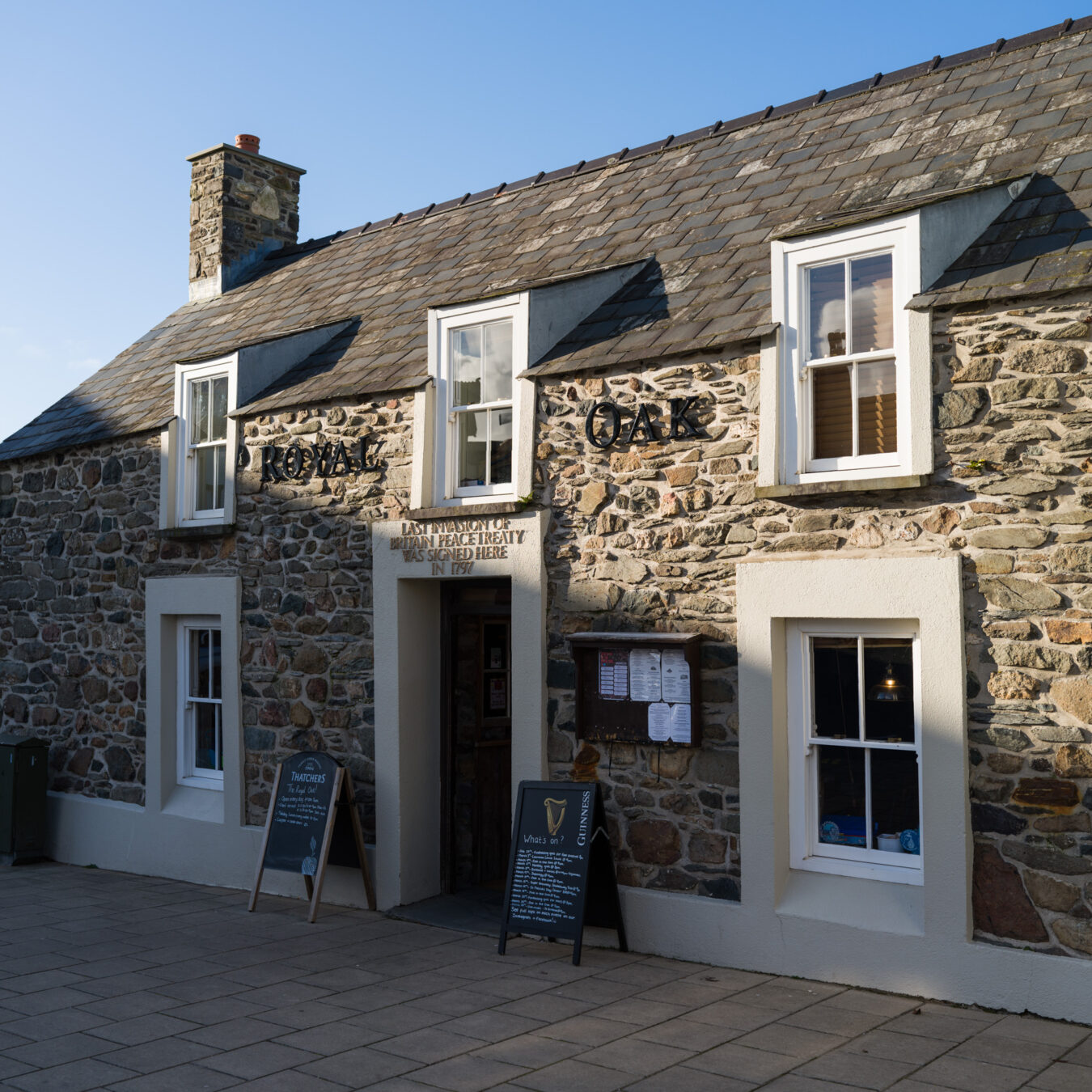
Last but not least, Fishguard is an excellent base for your holiday. You’re only half an hour away from must-see locations in South Pembrokeshire, such as St David’s Cathedral, while also being close to other popular destinations along Cardigan Bay to the north, including Aberteifi (Cardigan) and idyllic beaches such as Mwnt. And of course, you can catch a ferry to Ireland!
A LIGHTHOUSE NOT TO MISS
Strumble Head (also known as Ynys Meicel, which means St Michael’s Island in Welsh) is a rocky headland on the Pembrokeshire Coast Path. It marks the southern limit of Cardigan Bay and is considered one of the best places in Britain to observe cetaceans, especially porpoises.
One of the main attractions is the Strumble Head Lighthouse, which dates back to 1908 and is one of the last lighthouses built in the UK. You can reach it via a small suspension bridge and some steep steps. However, note that the bridge is open to the public only at certain times of the year, and access is via a narrow country road. Alternatively, a shuttle bus runs to and from Fishguard. (G Maps | Maps)
#2 – Newport
Welsh name: Trefdraeth (meaning ‘Town by the beach’)
Newport has become a highly desirable holiday destination in Wales. This coastal village, with its many picturesque stone-built buildings, boasts a large sandy beach nearby, plenty of options for dining, and numerous interesting places to explore in the area.
Founded by the Normans in the 1300s, Newport became a focal point for the wool trade, as well as pottery. One of the oldest intact medieval pottery kilns in Britain can be seen at Newport Memorial Hall. If you’re interested in historical sites, there is also a well-preserved small chambered tomb from the New Stone Age—Carreg Coetan Arthur—which has links to Arthurian myth.
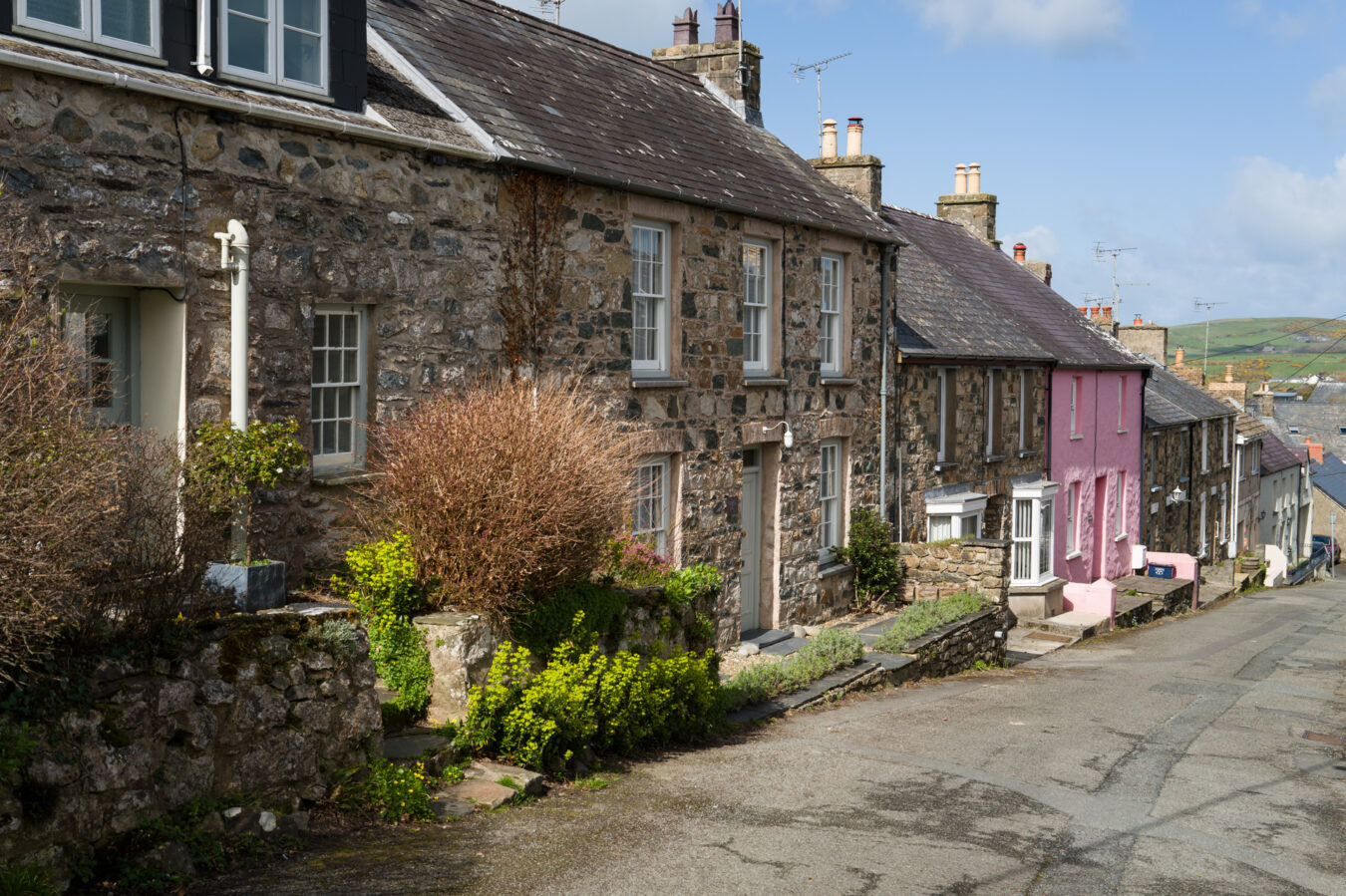
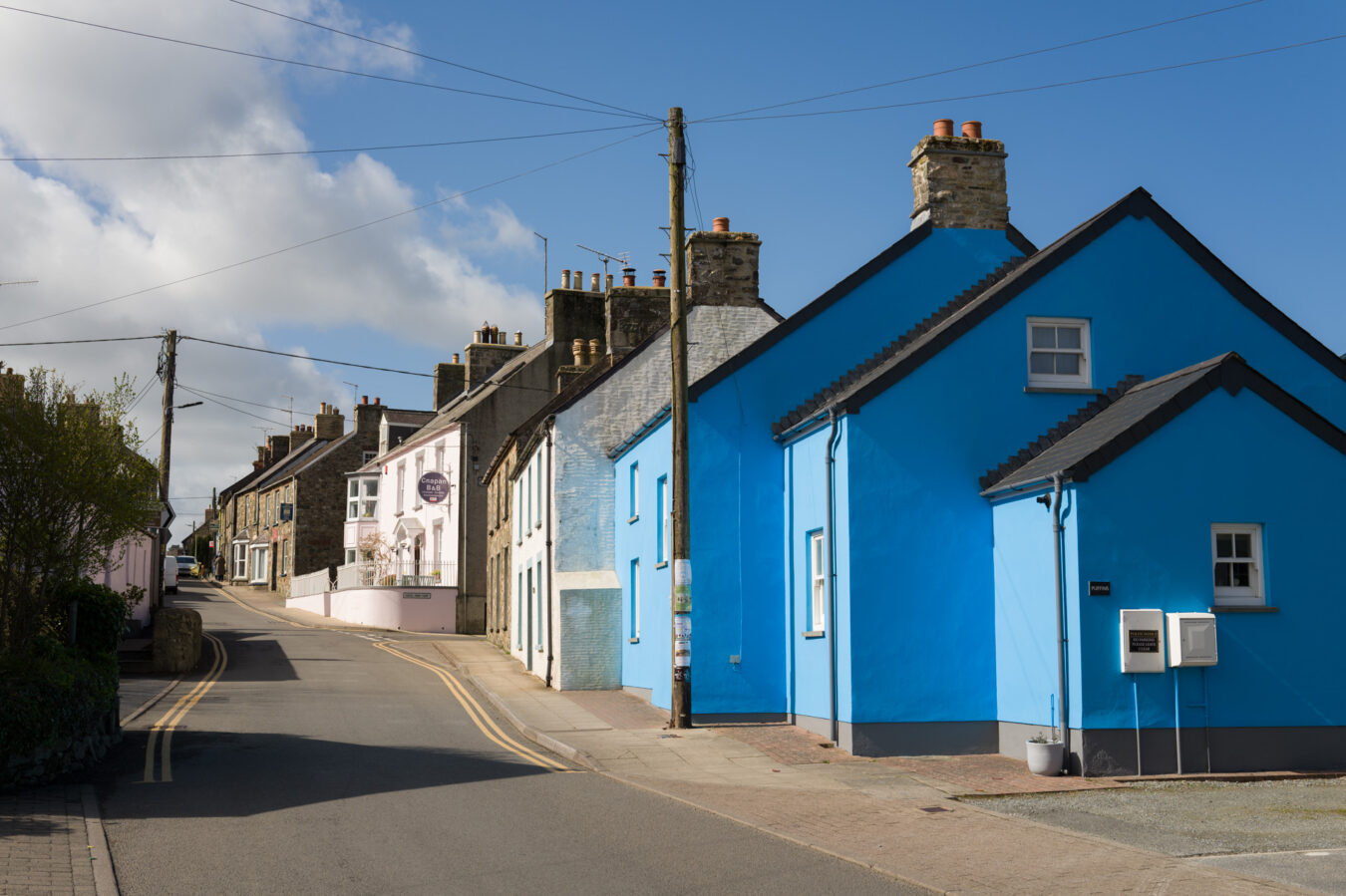
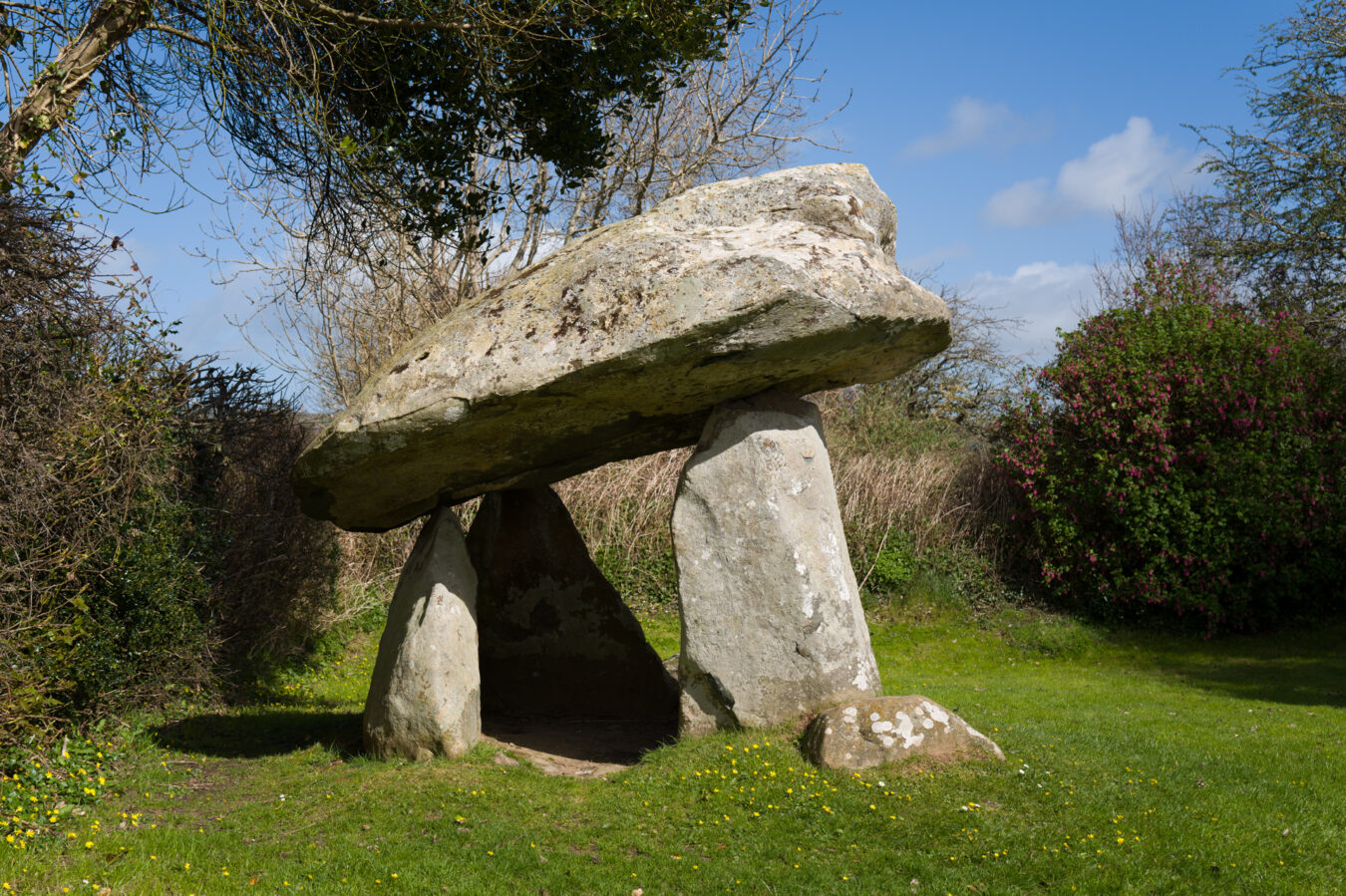
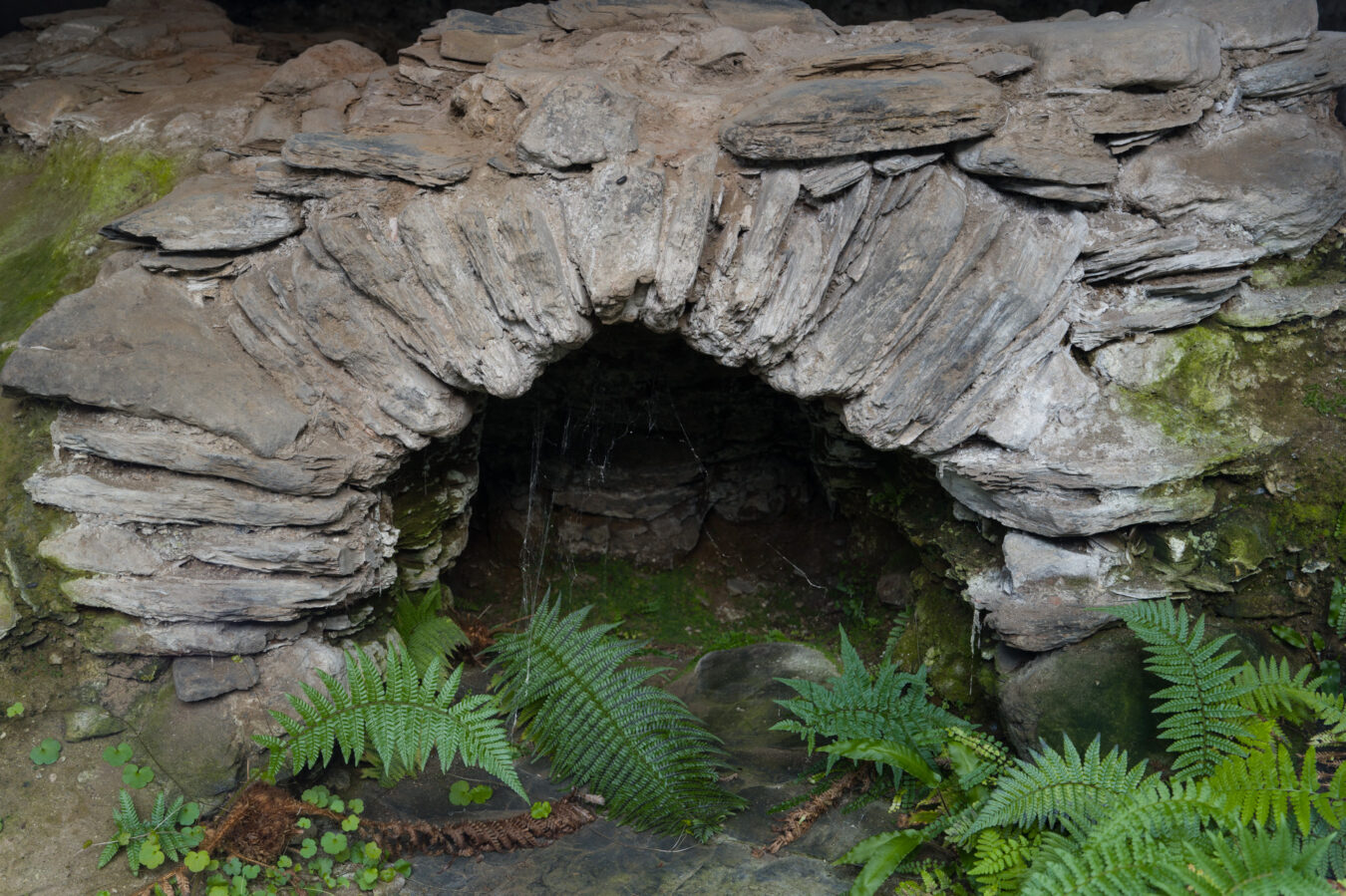
The Newport Sands beach is not exactly within easy walking distance (about half an hour on foot or 10 minutes by car), but Traeth Mawr (“Big Beach” in Welsh) rewards visitors with a mile of flat sand, which becomes quite busy in summer with people relaxing, swimming, and kayaking as they explore hidden coves among the cliffs. Alternatively, a shorter walk from the town centre will take you to Parrog, Newport’s harbour, where fishing boats lie peacefully in the shallow waters. Here, you will also find the boat club.
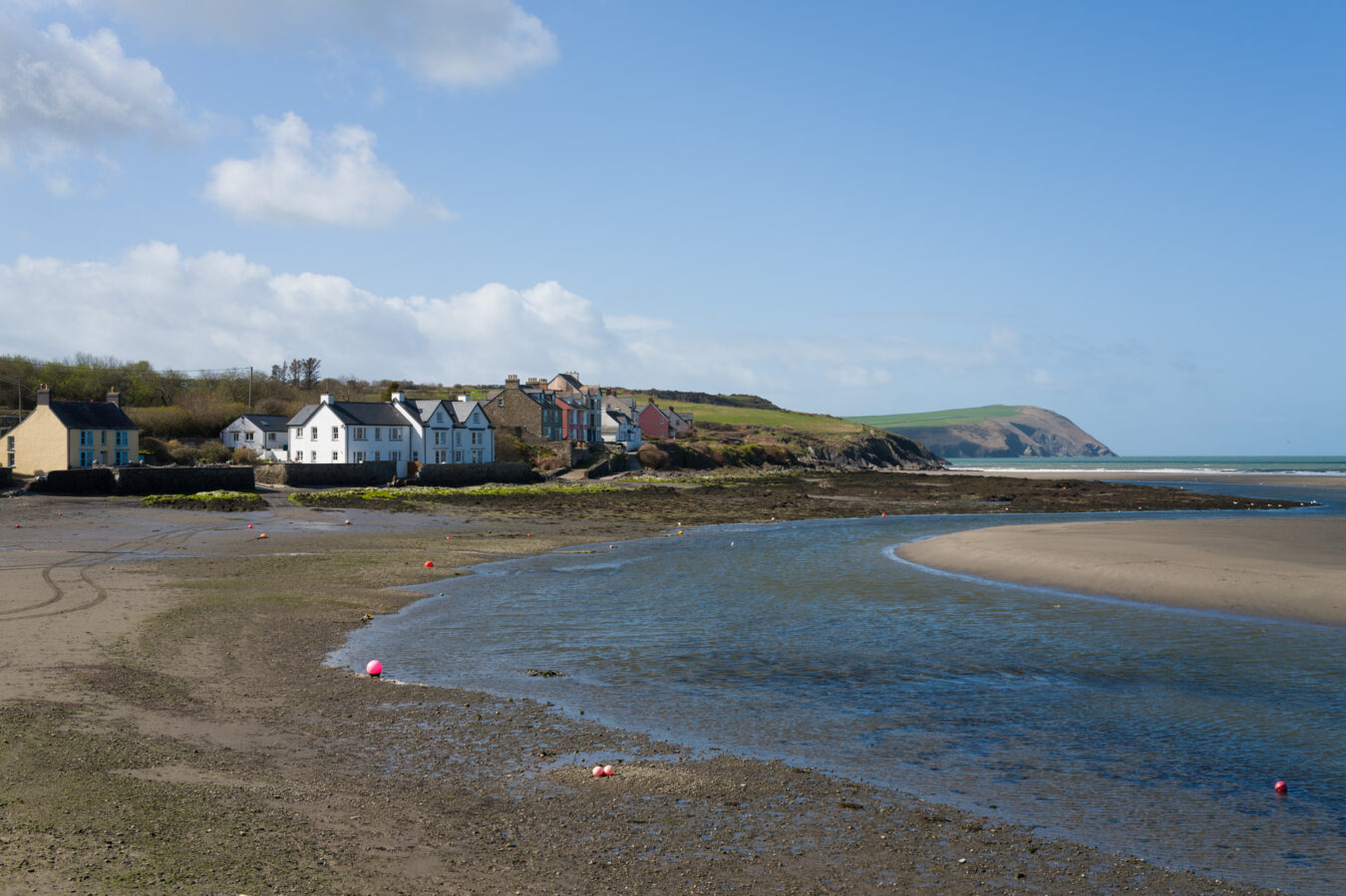
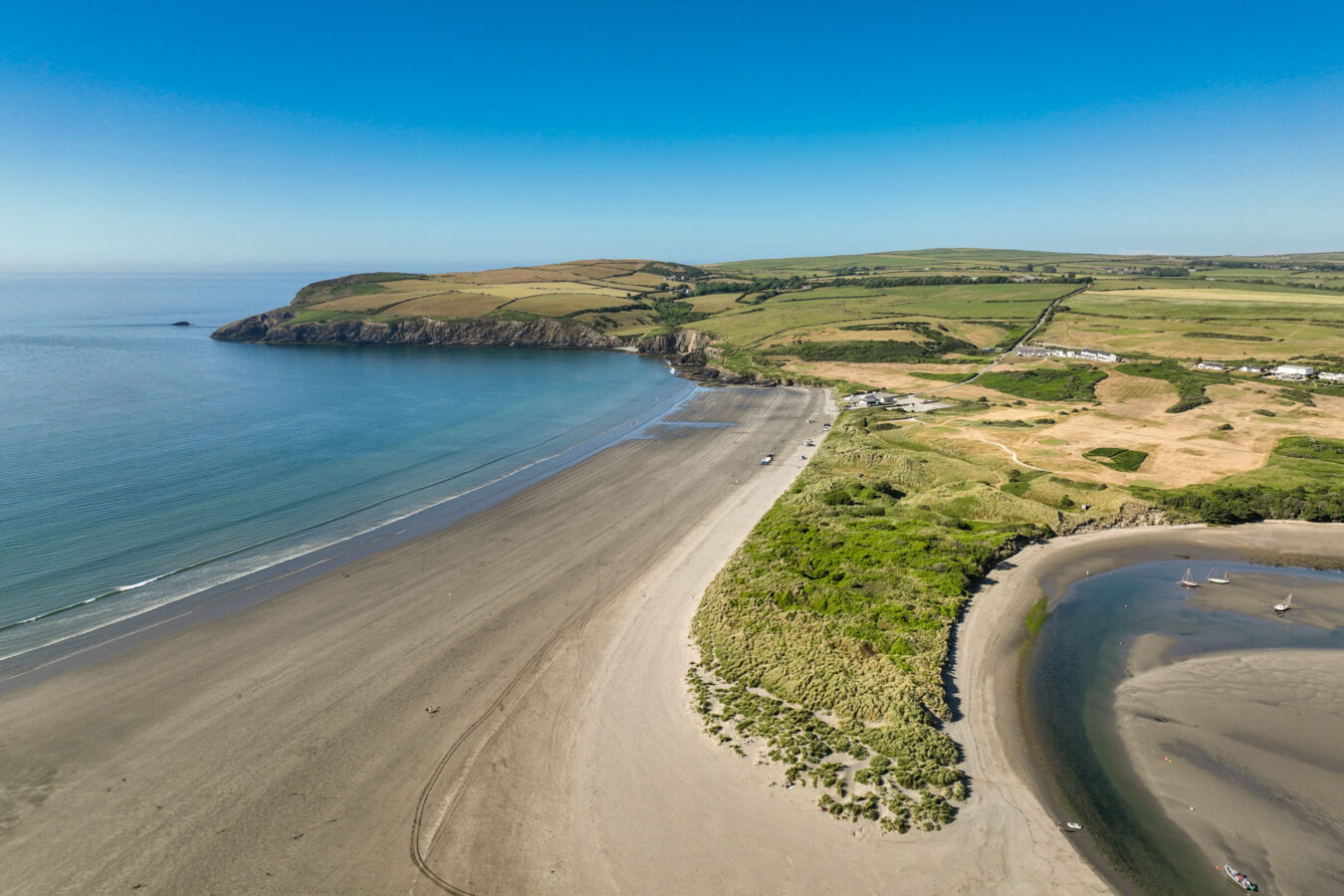
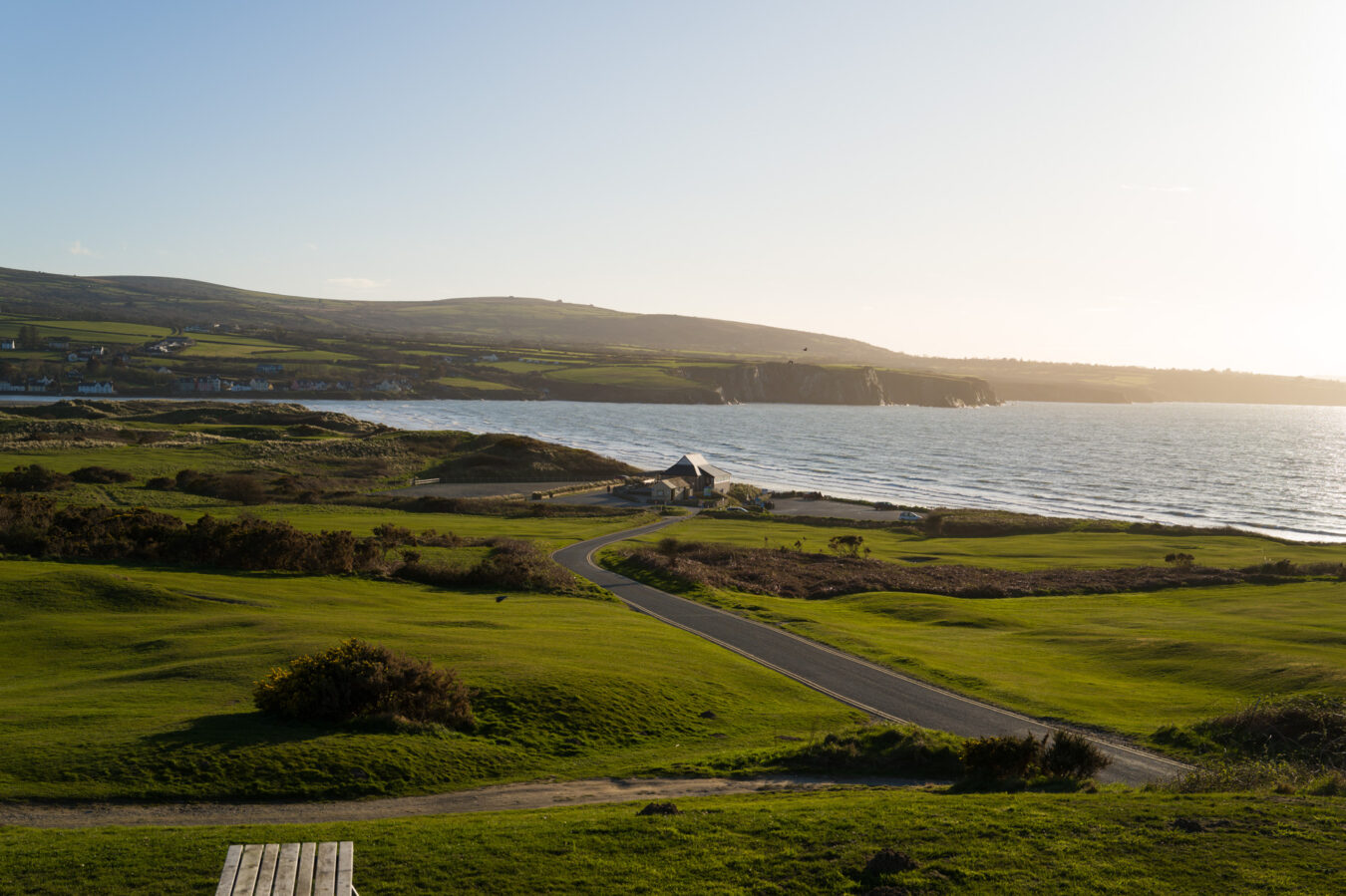

There are many walking routes in the area, some following the Pembrokeshire Coast Path, which loops around the cliff-lined coast, while others lead through beautiful woodlands. One not to be missed is the Ynys Dinas Circular Walk—a short but physically demanding route with steep ascents and descents that rewards walkers with dramatic coastal scenery. The walk can start from Cwm-yr-Eglwys, a small beach with the remains of a chapel that was destroyed by a great storm in the 19th century.
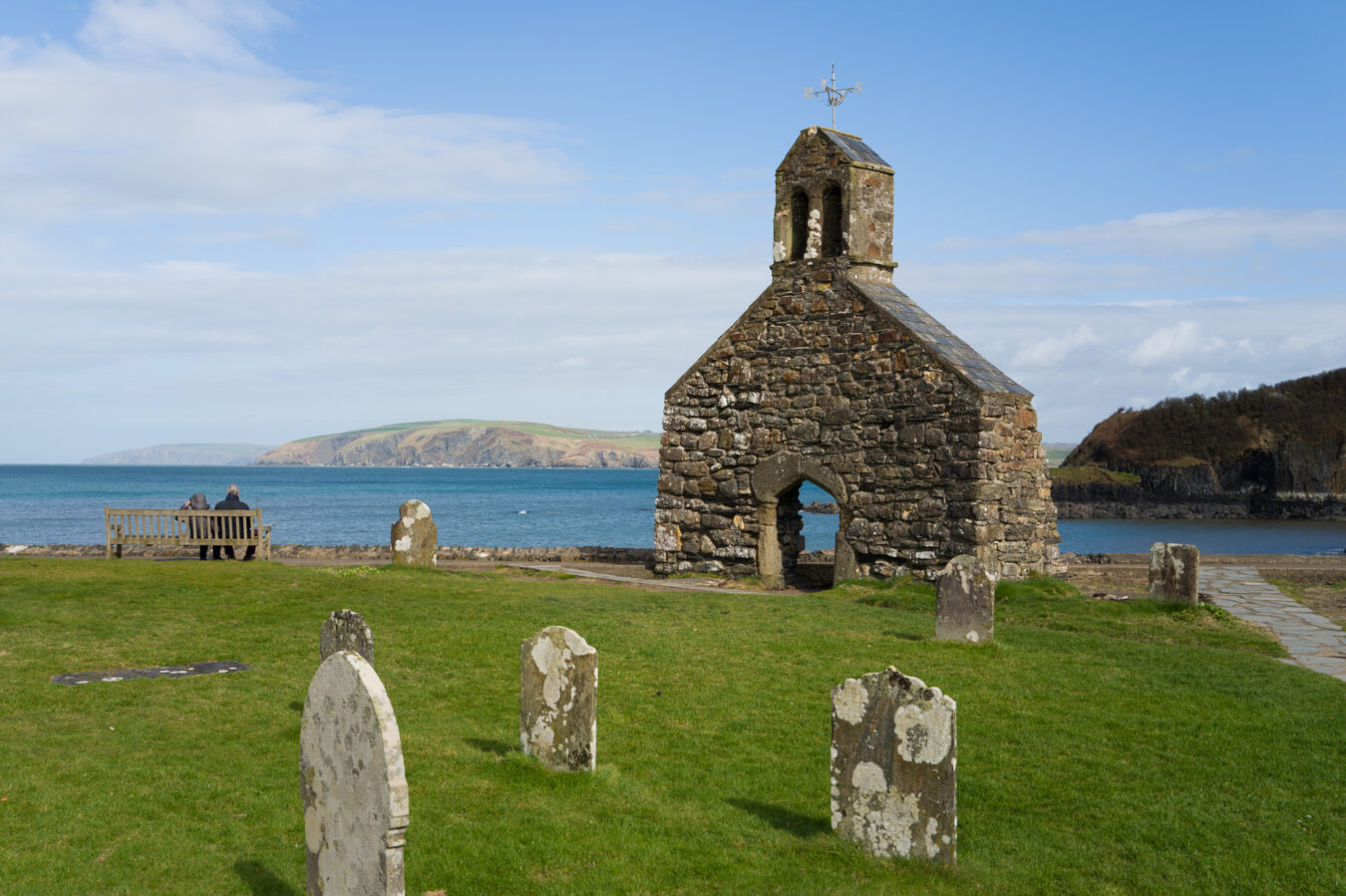
MORE ancient history
If you’re happy to travel out of town, Castell Henllys Iron Age Village and Pentre Ifan Chambered Tomb are only a 10-minute drive away. The latter, also known as The Floating Stone, is an elegant display of massive stones that have stood for more than 5,000 years. No one knows for sure what the monument represents. A chambered tomb is the most likely identification, but no human remains have ever been discovered. The stones are local—the same ‘bluestone’ used at Stonehenge. (G Maps | Maps)
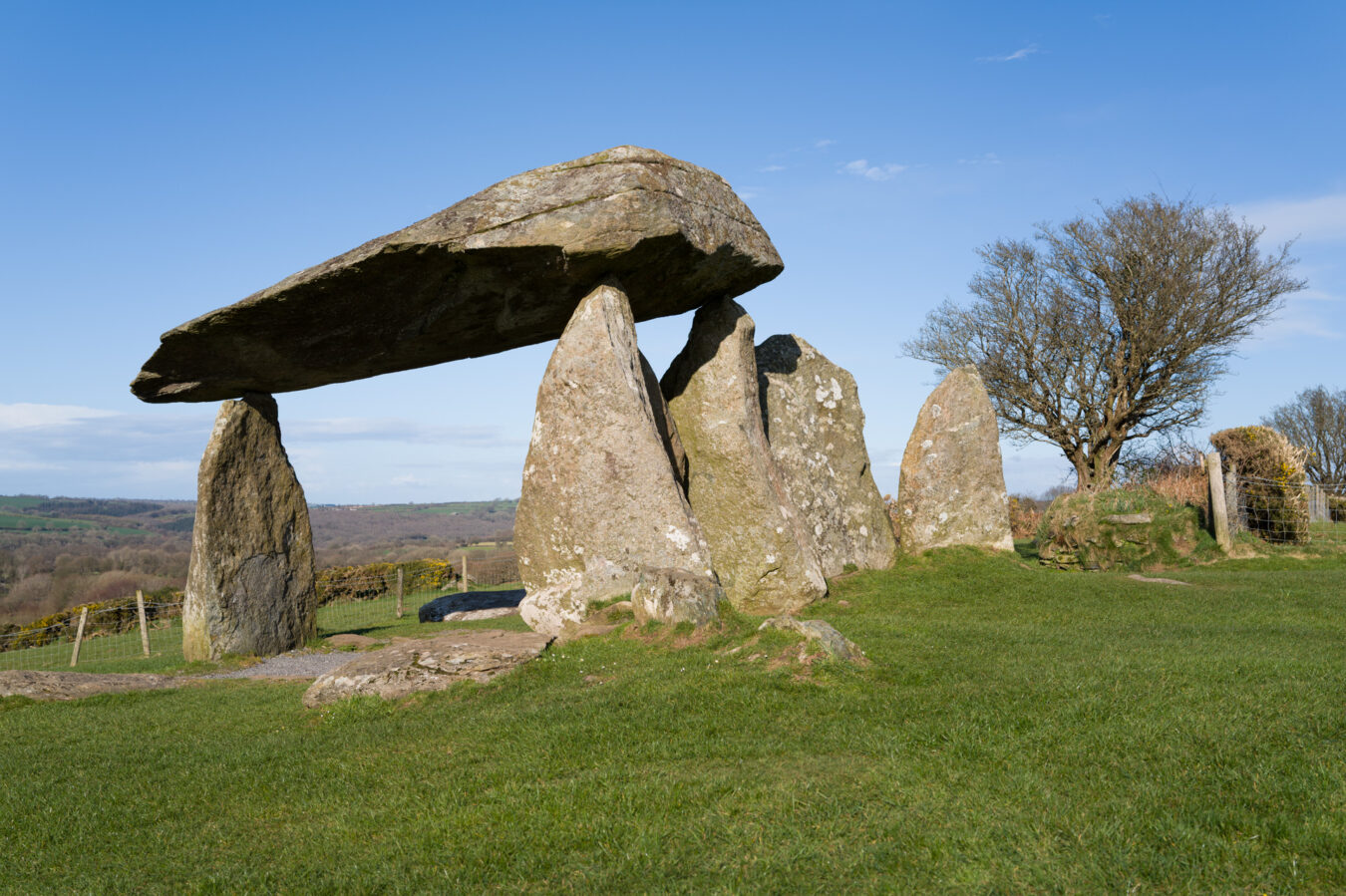
#3 – Cardigan
Welsh name: Aberteifi, meaning ‘the mouth of the [river] Teifi’
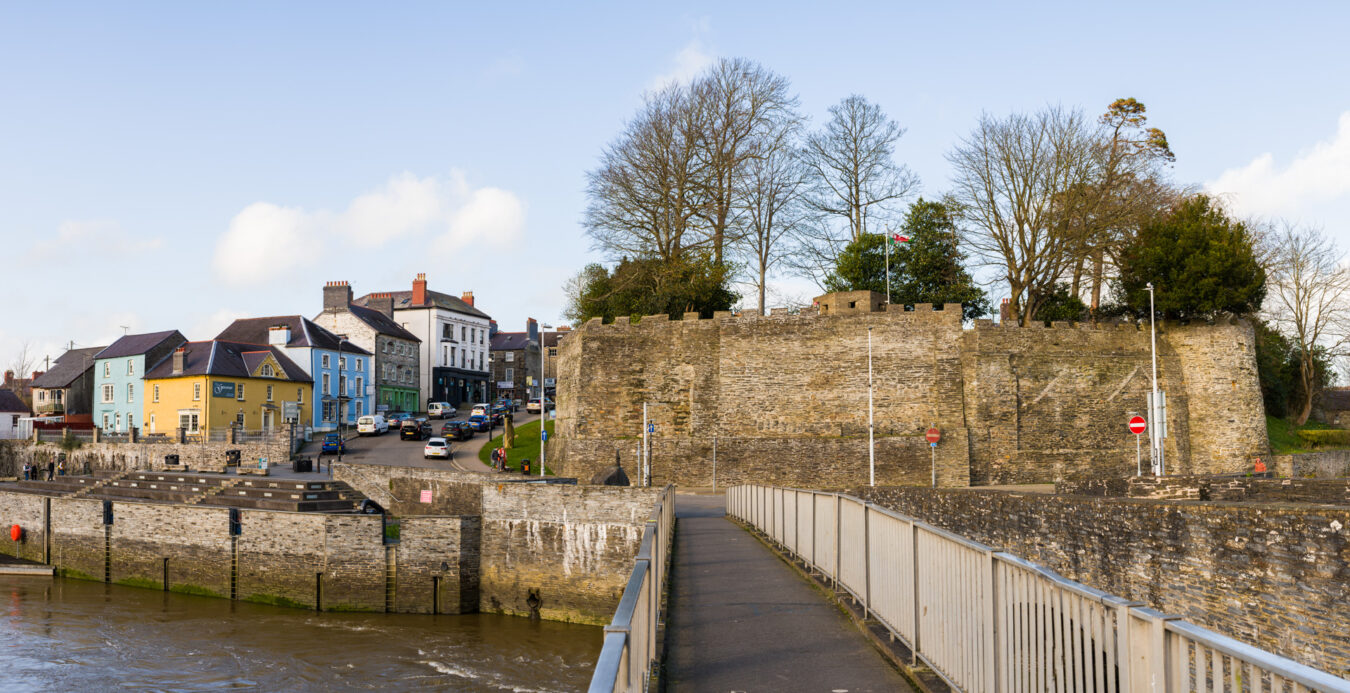
See Cardigan on
Google Maps | Apple Maps
Public transport
- T5 bus (Aberystwyth – Haverfordwest)
- 460 bus (carmarthen)
Of course, you can’t miss out on Cardigan itself! This charming town is the historic ‘capital’ and second-largest town of Ceredigion. Although there was previously a railway station in Cardigan, it’s no longer operational, so if you don’t have a car, you’ll need to travel in via bus.
The most famous attraction Cardigan boasts is Cardigan Castle, a historic Norman-era building known for being the site of the very first Eisteddfod that was ever held in Wales. If you haven’t come across the Eisteddfod, it’s a Welsh festival based around competitions in poetry and music, along with other genres of art and performance. Since 2015, the castle has been used as a site for events, accommodation, and a restaurant. However, it’s still open to the public to explore the ruins, enjoy the beautiful gardens, and learn about its history through exhibitions.
Although a population of 4,000 may seem modest to city-dwellers, Cardigan has a bright and bustling feel compared to smaller towns in the area. It is a great cultural hub for film and theatre enthusiasts, boasting the only truly independent multiplex cinema in the UK, Mwldan, as well as the Small World Theatre. There’s a fair selection of pubs and other places to eat, and the high street features lots of cute and quirky gifts and clothes shops, too!
- Check out our article about 10 things to do in and around Cardigan

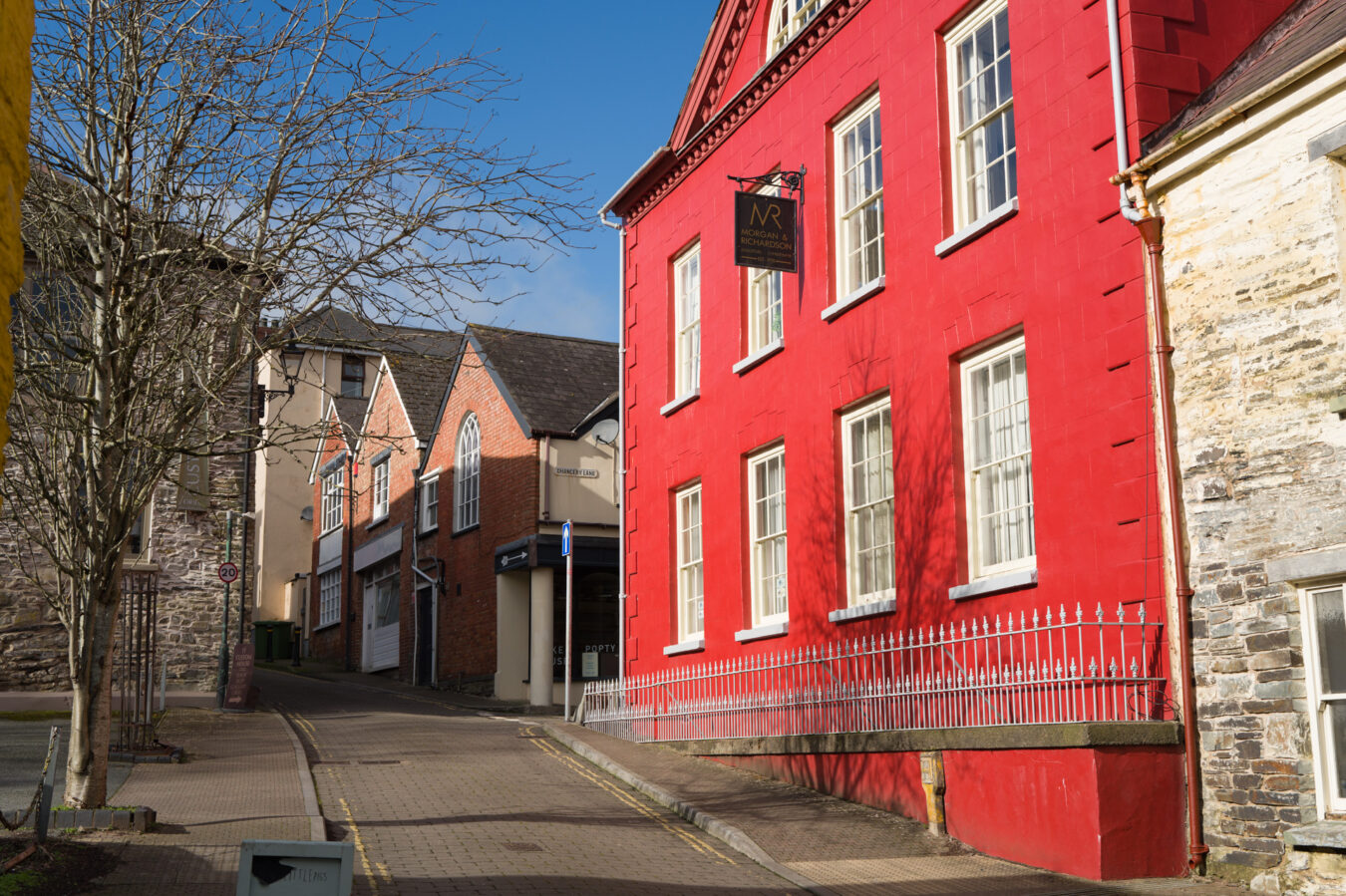
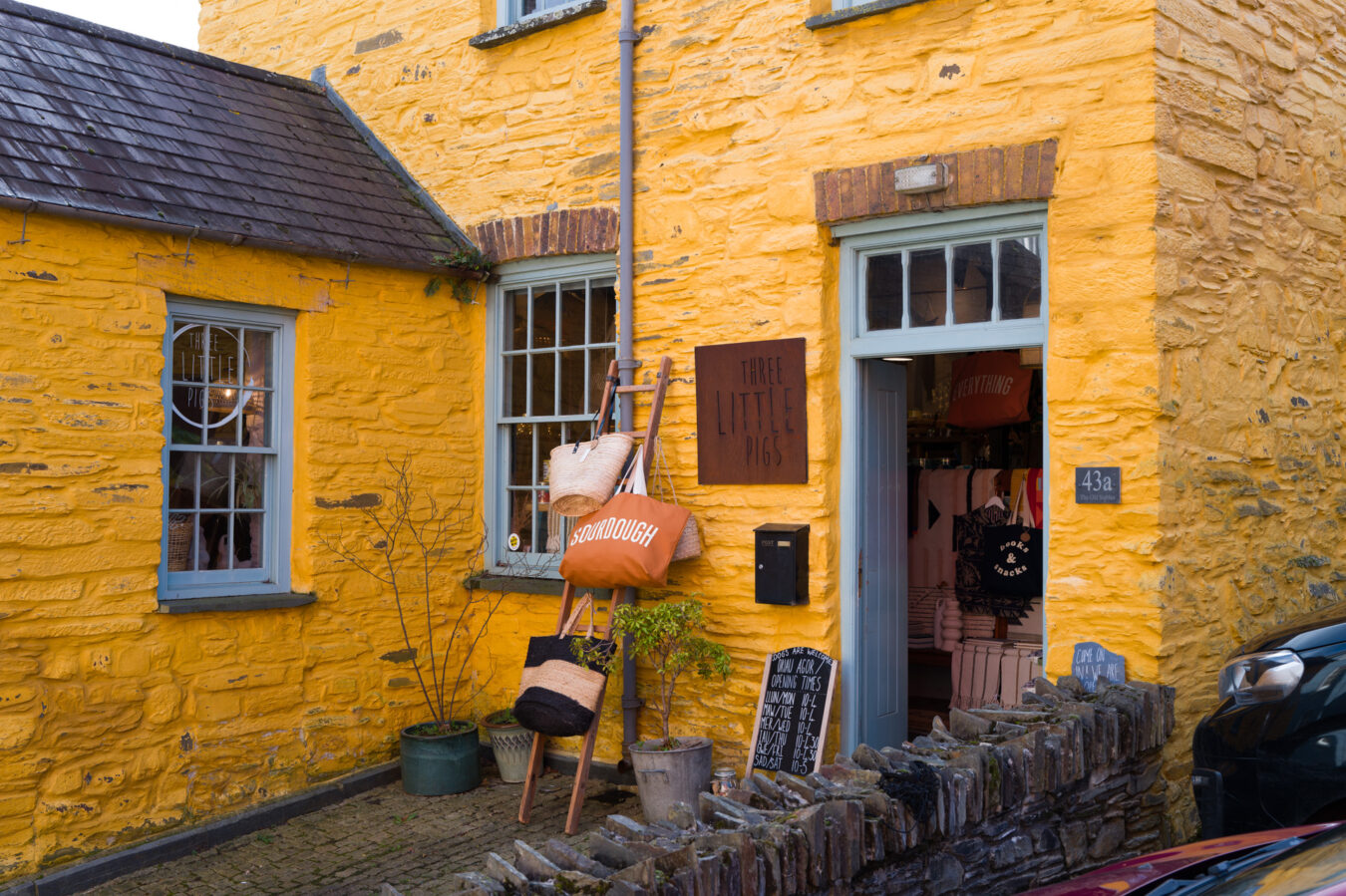
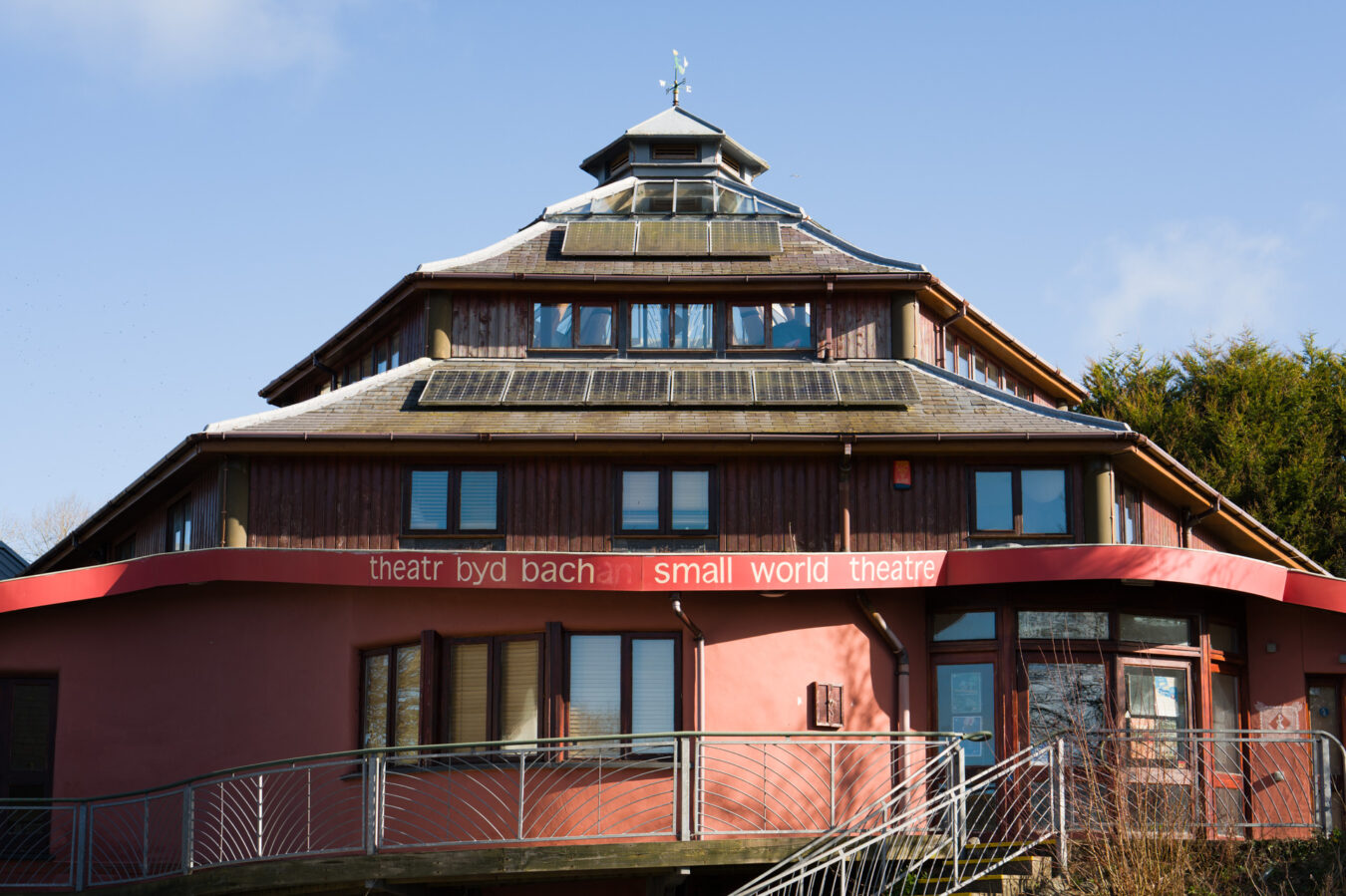
WILDLIFE HAVEN
About a 15-minute drive southeast of Cardigan, you’ll find the Teifi Marshes Nature Reserve, one of the best wetland sites in Wales. There are several hides for observing and photographing birds, a circular walk around the reserve, and a visitor centre with a café that is open from Wednesday to Sunday. You can also reach the reserve on foot from the town in about 30 minutes by following the dedicated footpath. (G Maps | Maps)
#4 – Mwnt

See Mwnt on
Google Maps | Apple Maps
Mwnt is absolutely tiny – so although there are some self-catering cottages available, another good option is to stay in Cardigan and take a day trip or two here. But this little hamlet is home to Traeth-y-Mwnt (traeth = beach in Welsh), which might just be the most gorgeous beach along the entirety of the bay.
Hidden in the crook of a large hill, Traeth-y-Mwnt is a luxurious cove with plenty of golden sand and substantial waves, where dolphins and seals (including pups!) are often spotted. Swimming in the sea is allowed despite there not being a lifeguard service.
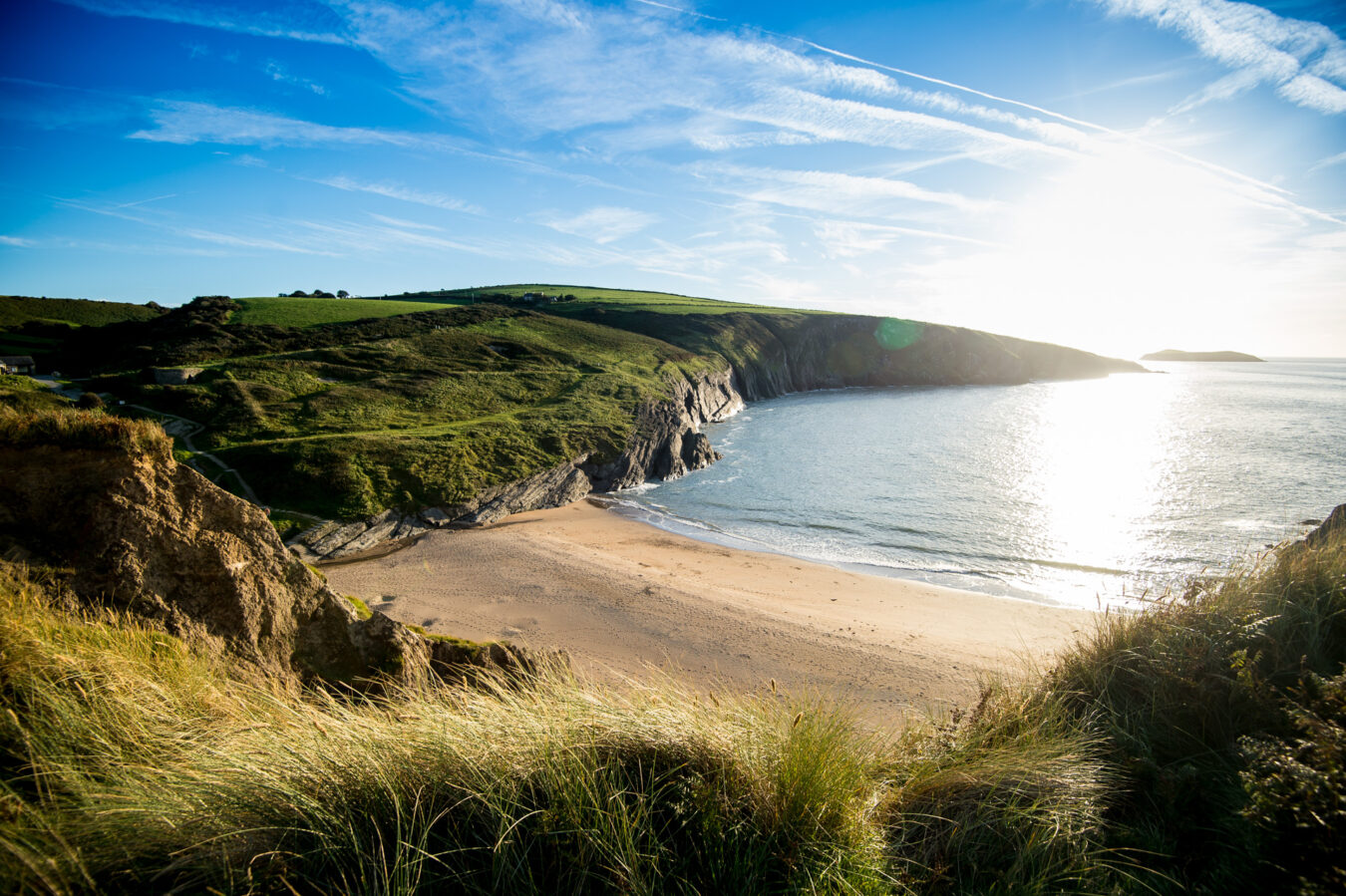
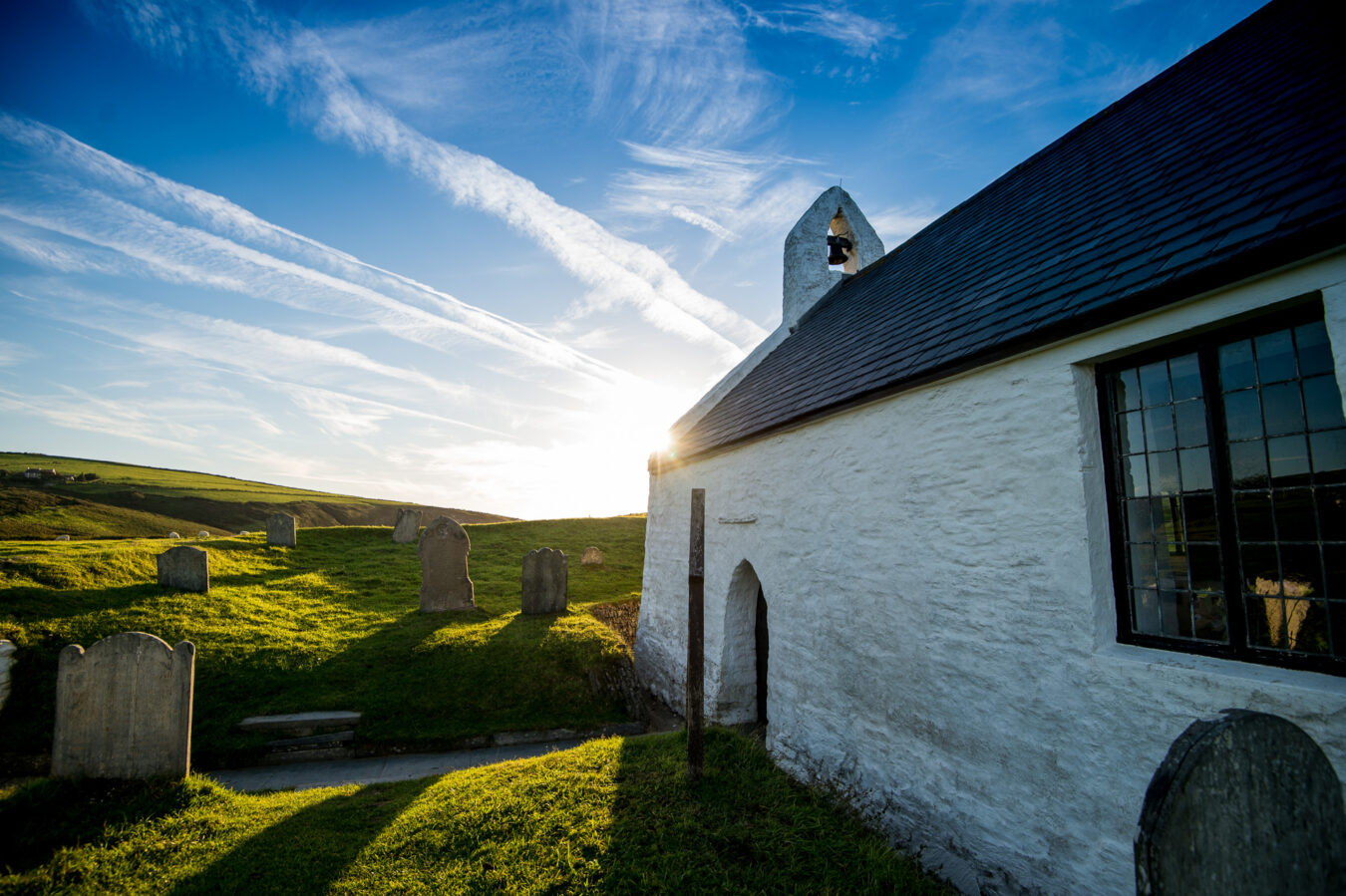
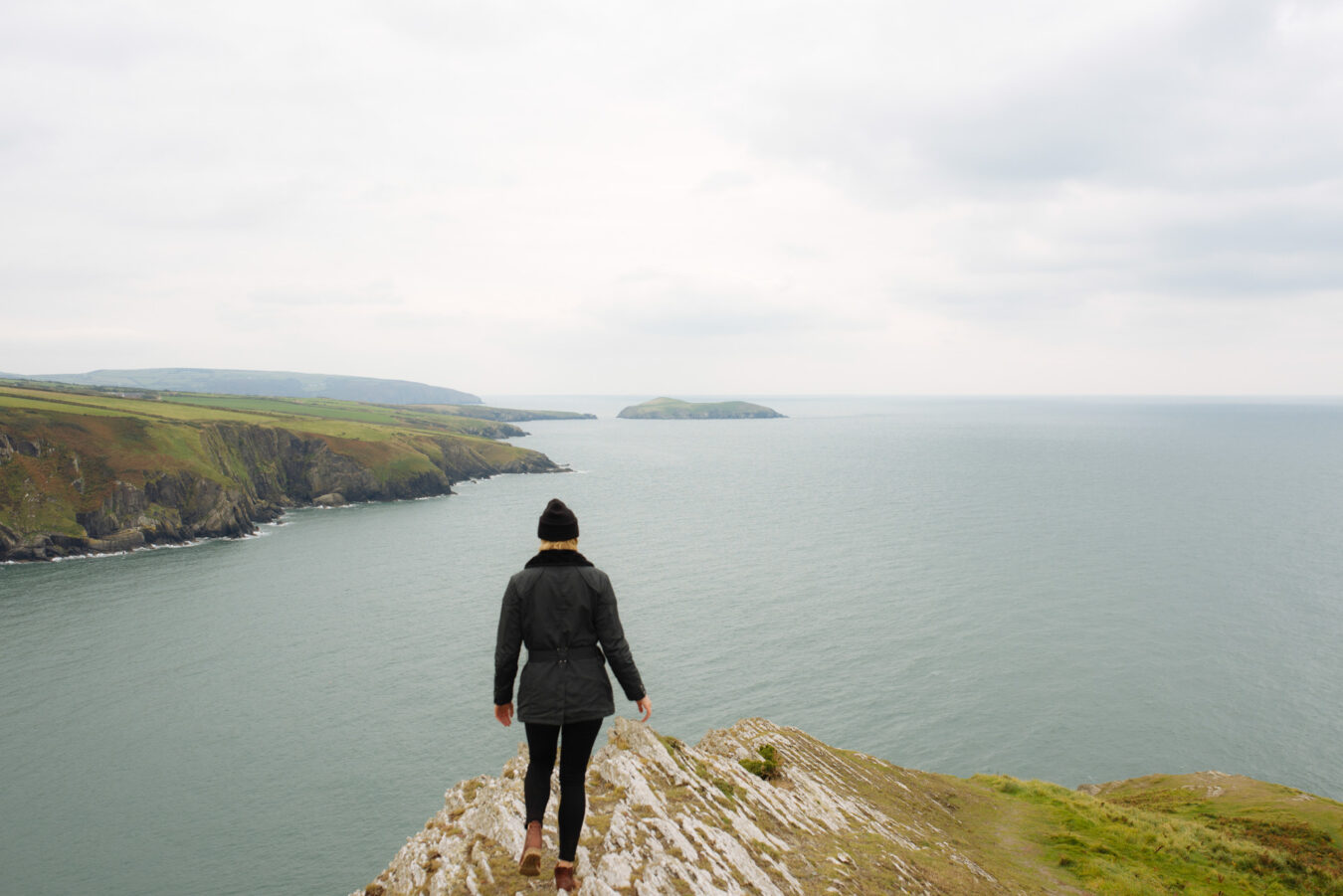
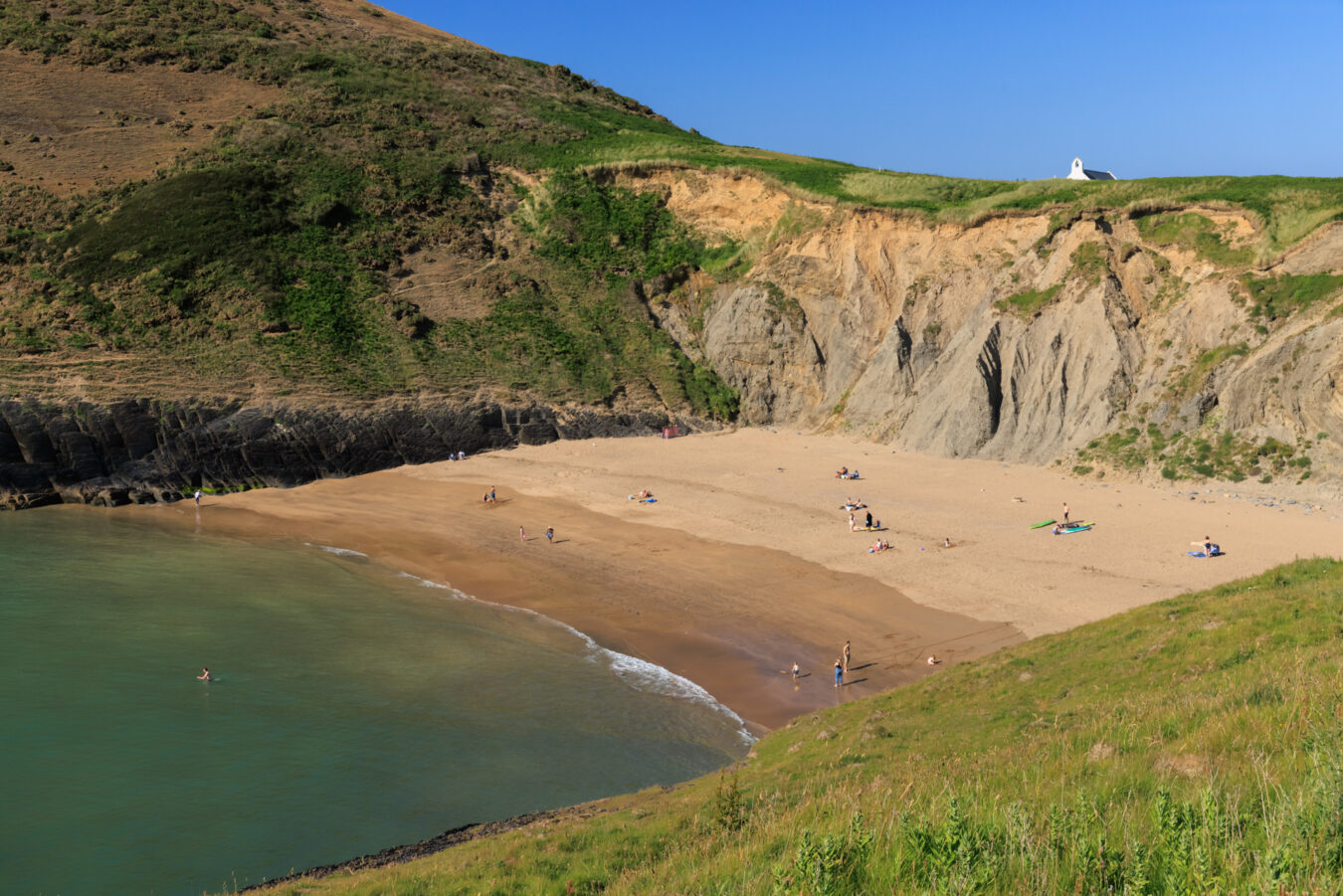
The views are great from the beach itself, or from the hill (from which you can sometimes even see the faraway mountains of Snowdonia). And it’s a really nice walk to access it, although unfortunately from the hillside you need to take a steep series of steps downwards to actually get to the beach, meaning it’s not accessible for people with mobility issues.
THINGS TO KNOW
- Mwnt is a National Trust site
- Parking is free for National Trust members; otherwise, there is a £4 all-day fee.
- Facilities include toilets and a café, which is open from late February to late October.
- Dogs are permitted only during the off-peak season, from early October to late March.
#5 – Aberporth
Welsh name meaning: mouth of the port
Formerly a fishing village (although some small-scale fishing activities still take place today), Aberporth is a popular destination for families looking to enjoy sandcastle building, rock pools, and caves to explore at low tide. There are two Blue Flag sandy beaches—Traeth y Dyffryn and Traeth Dolwen—divided by a small headland, which become separated at high tide. During the main summer holiday season, RNLI lifeguards patrol both beaches. Aberporth is also popular among divers and surfers, as the beaches are sheltered from stronger winds.

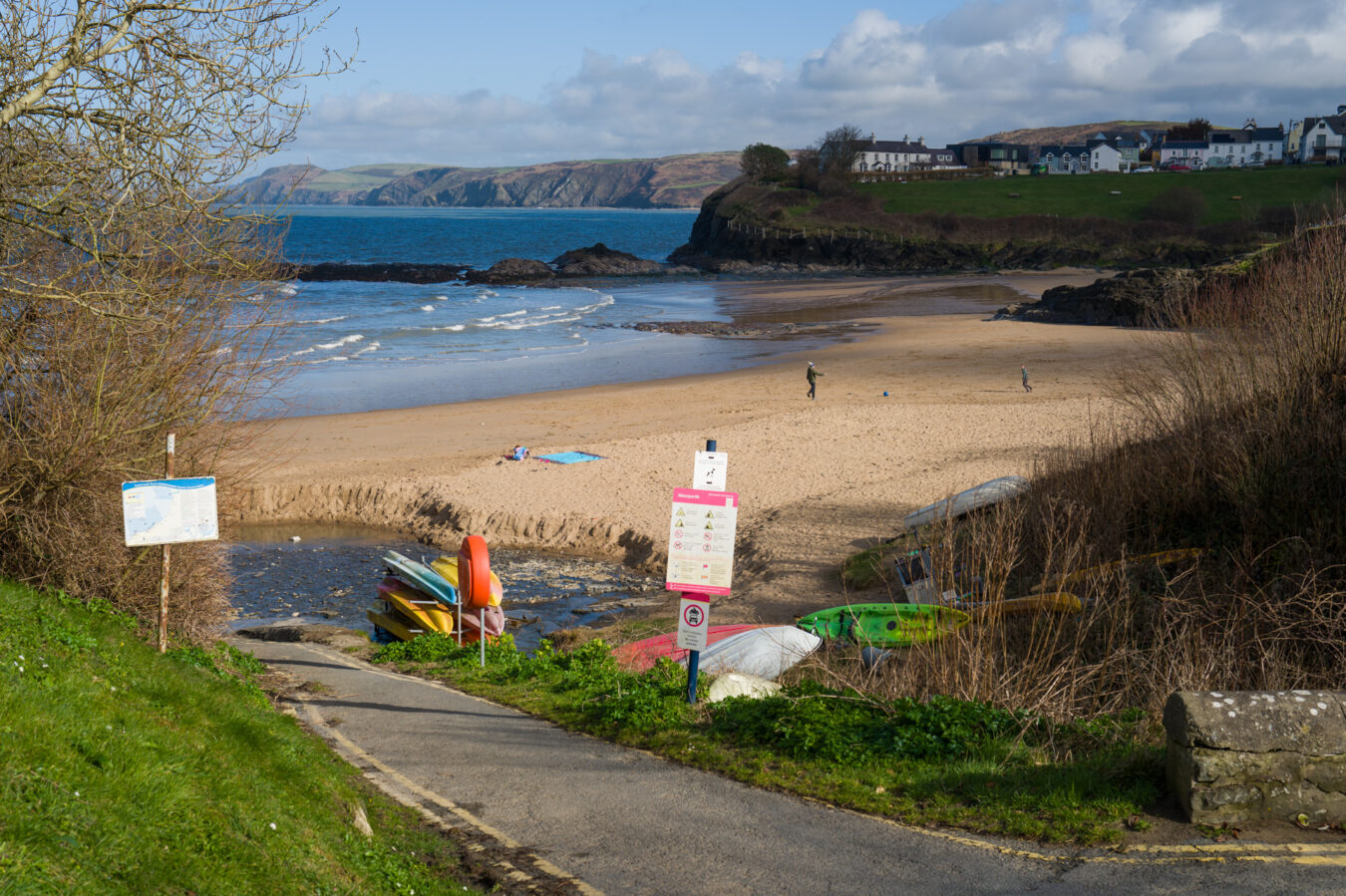
In the past, there have been sightings of porpoises and orcas, although this is extremely rare today. Bottlenose dolphins are frequently seen coming close to the shore. Sunfish and basking sharks can also be spotted offshore in the summer.
You’ll find a good selection of restaurants, cafés, and other amenities, some offering beautiful views of the seaside. There are several car parks, one of which has two slow 7kW chargers.
If you fancy a walk, the coastal path leads to the small village of Tresaith, east of Aberporth and about 30 minutes away on foot. There, you’ll find another attractive sandy beach with rock pools and an impressive waterfall on the cliff (another small waterfall can be seen along the way). Note that the first part of the walk from Aberporth is accessible for wheelchair users until the tarmac ends and the path begins a steep descent.
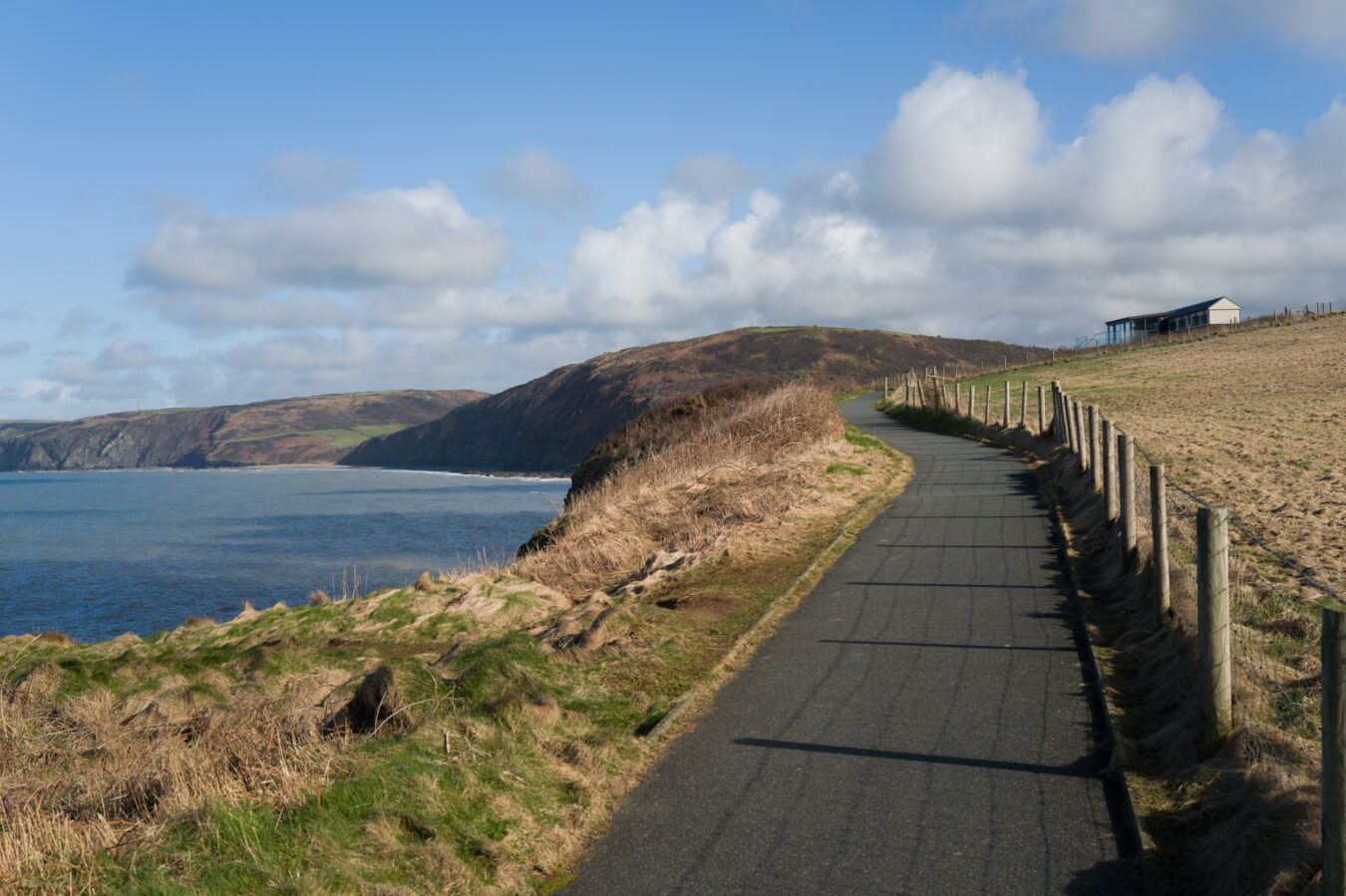
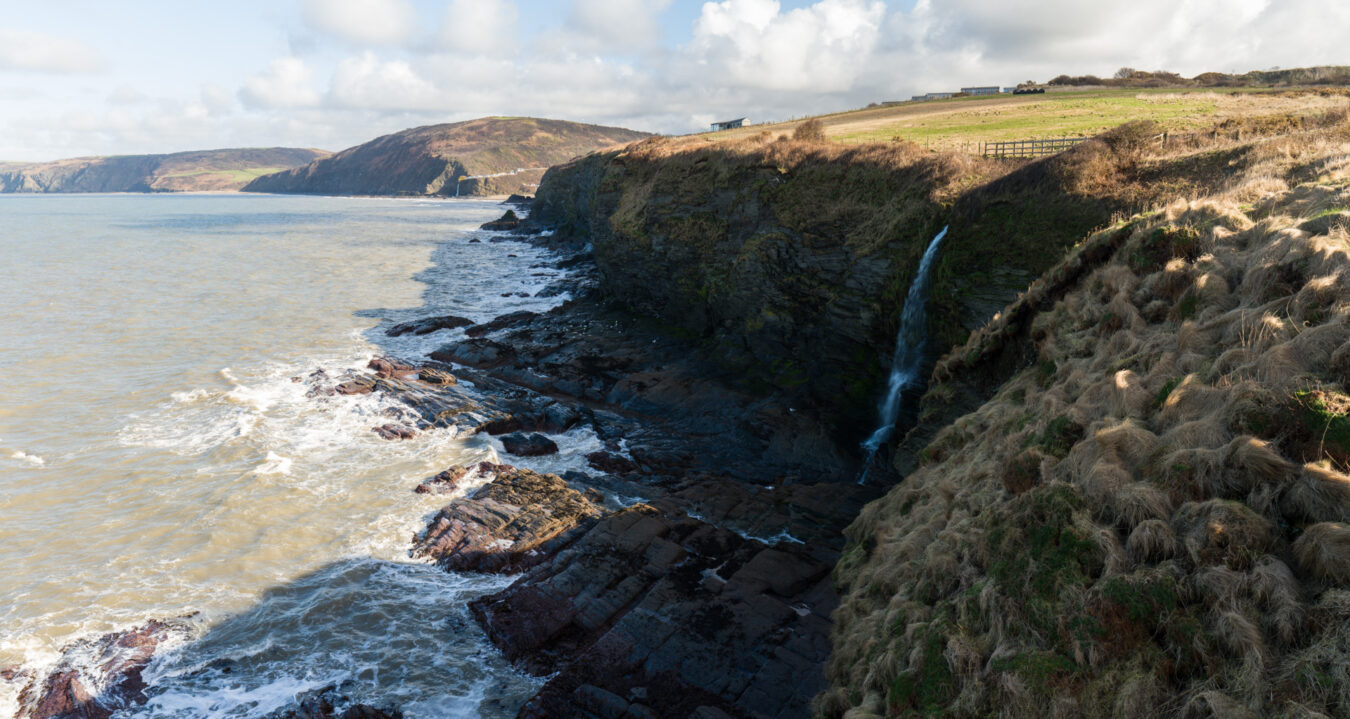
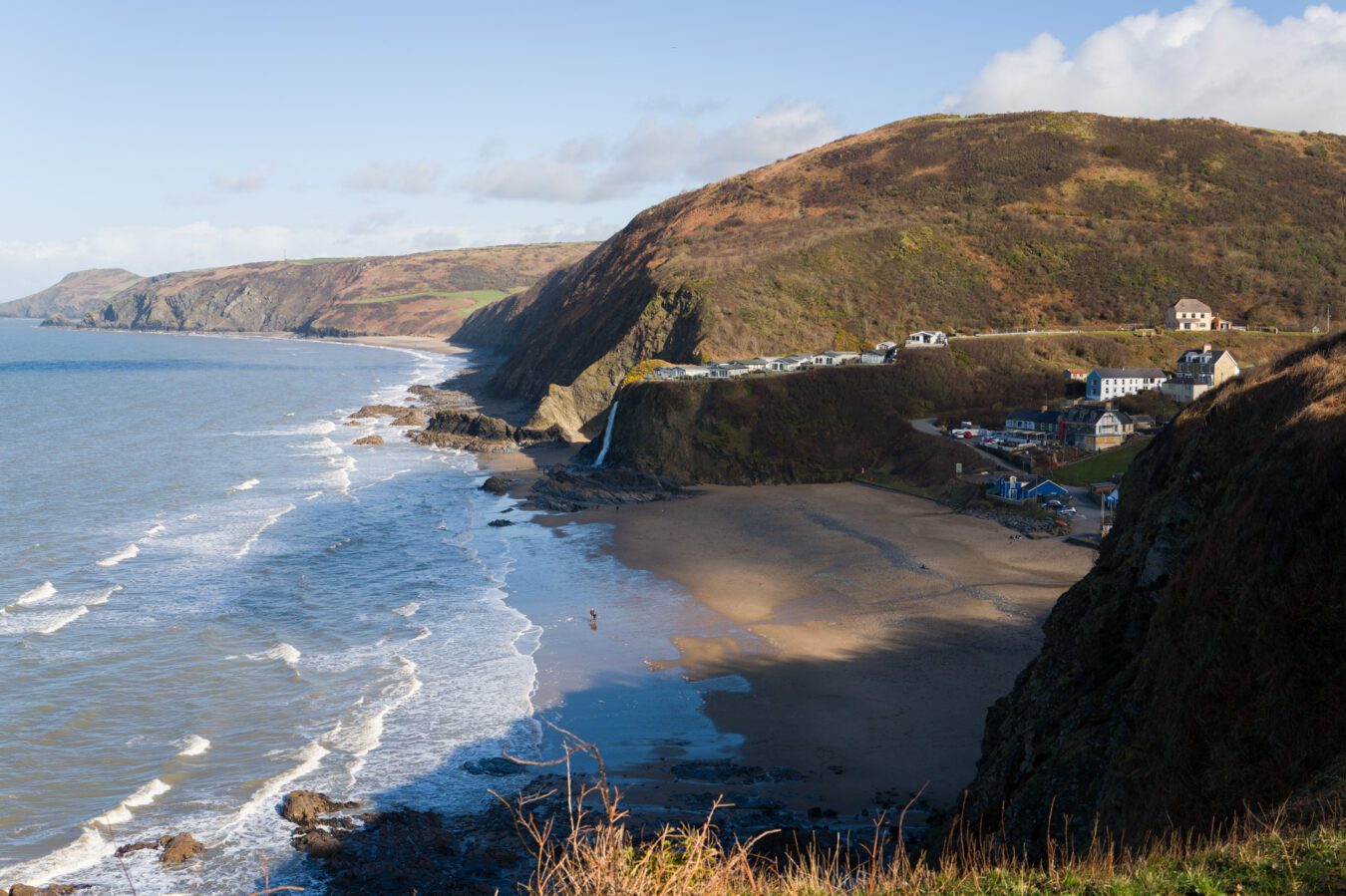
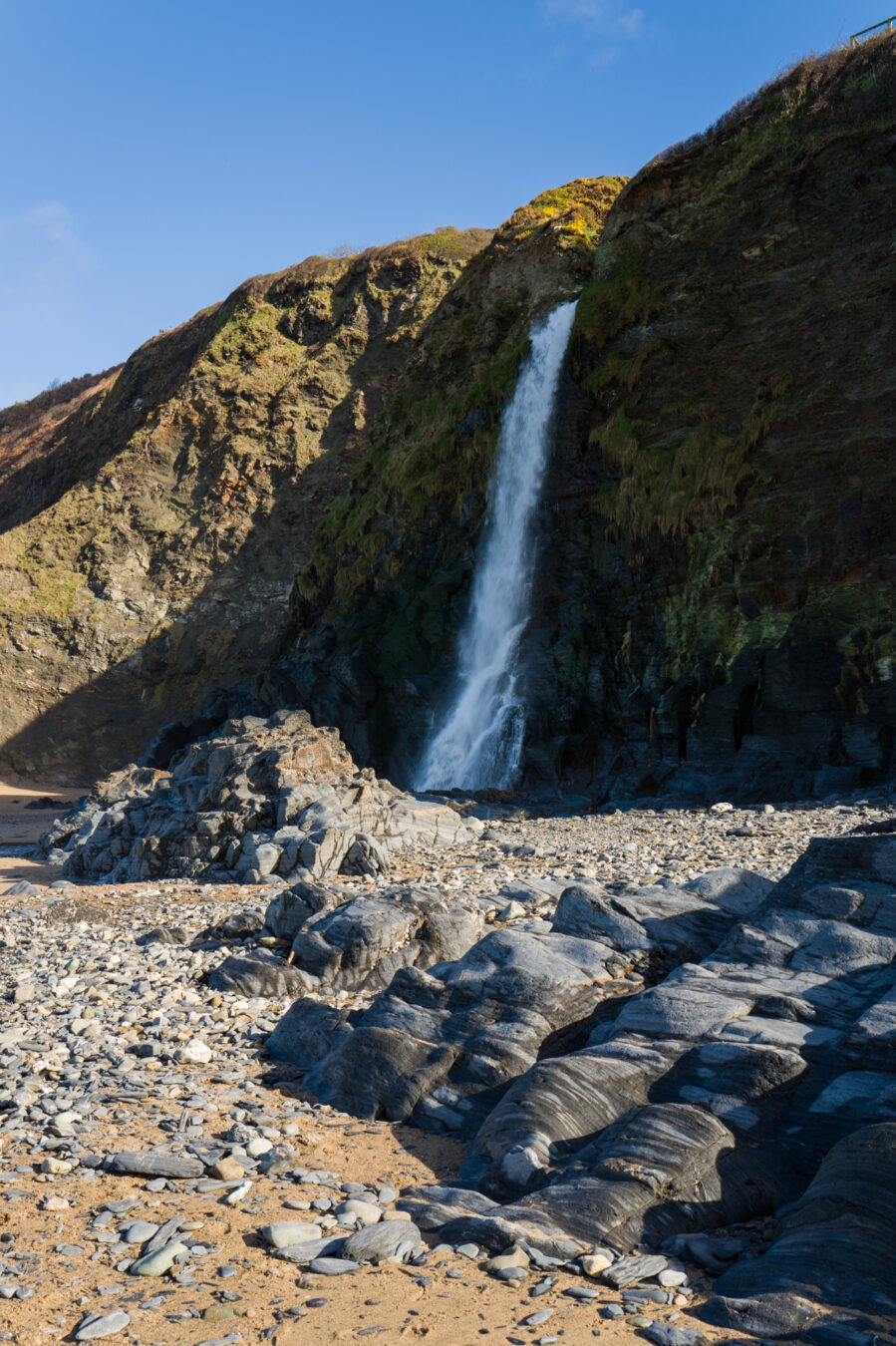
#6 – Llangrannog
Welsh name meaning: The church of Carannog (Saint Carannog was an abbot and saint who founded the village in the 6th century)
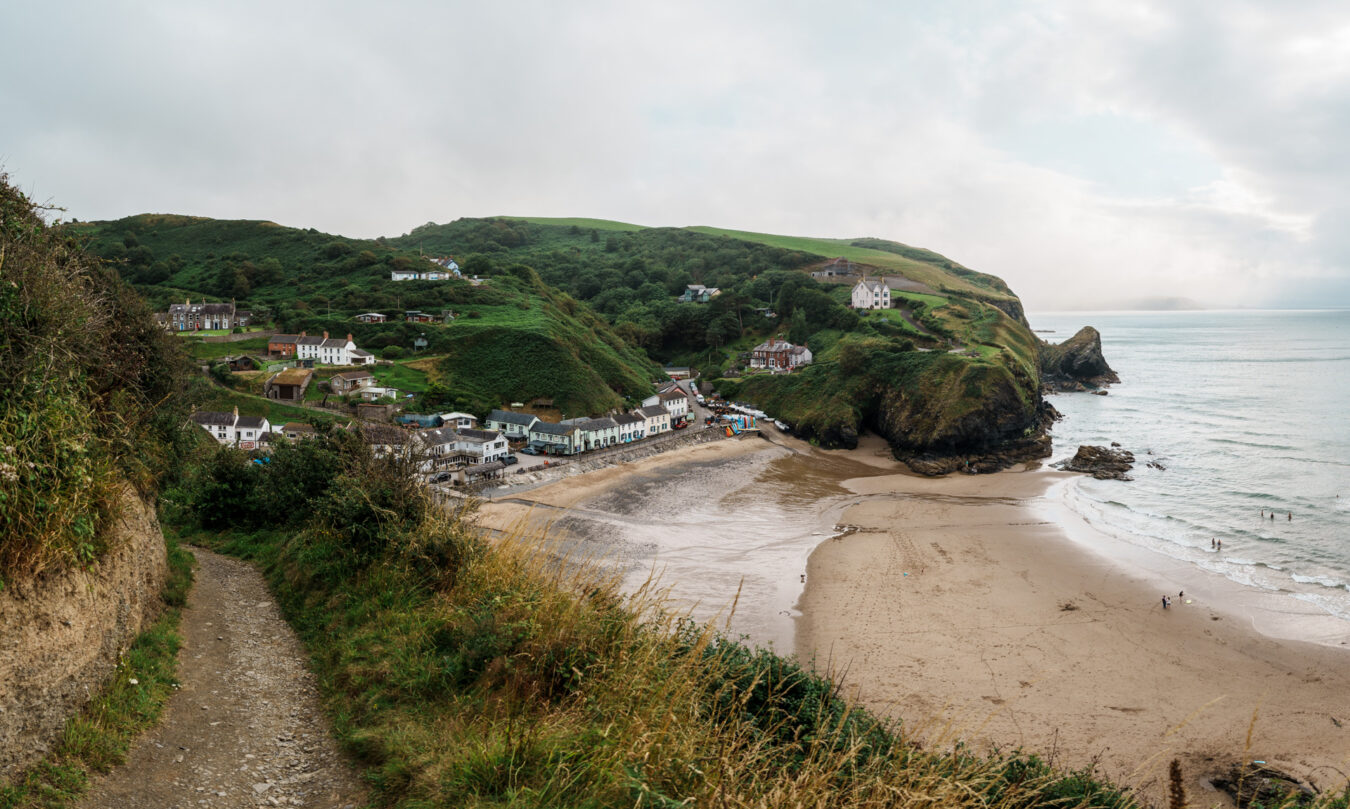
See Llangrannog on
Google Maps | Apple Maps
Six miles south of Newquay, Llangrannog is an absolute treasure. In 2011 it had a tiny population of only 775, which has fallen further since then, but it’s a popular tourist destination full of B&Bs and self-catering accommodation. And it’s not hard to see why, as despite its small size, Llangrannog has not one, not two, but seven deep, sandy beaches nestled into its cliffside.
There is a bit of a catch here – apart from the second beach, each successive beach is only accessible by wading, swimming or boating from the last, which is only possible when the sea is calm and tides are low. As a child, the seventh beach was almost semi-legendary to me, and having reached it a couple of times now, I can confidently say it lives up to expectations – it’s huge, with incredibly pale sand, and there are rarely more than one or two people on it. While the first and second beaches tend to be relatively accessible, reaching the others requires a fairly strenuous hour or so of swimming, wading, and climbing over rocks. For beach-lovers like me, though, that’s all part of the fun!
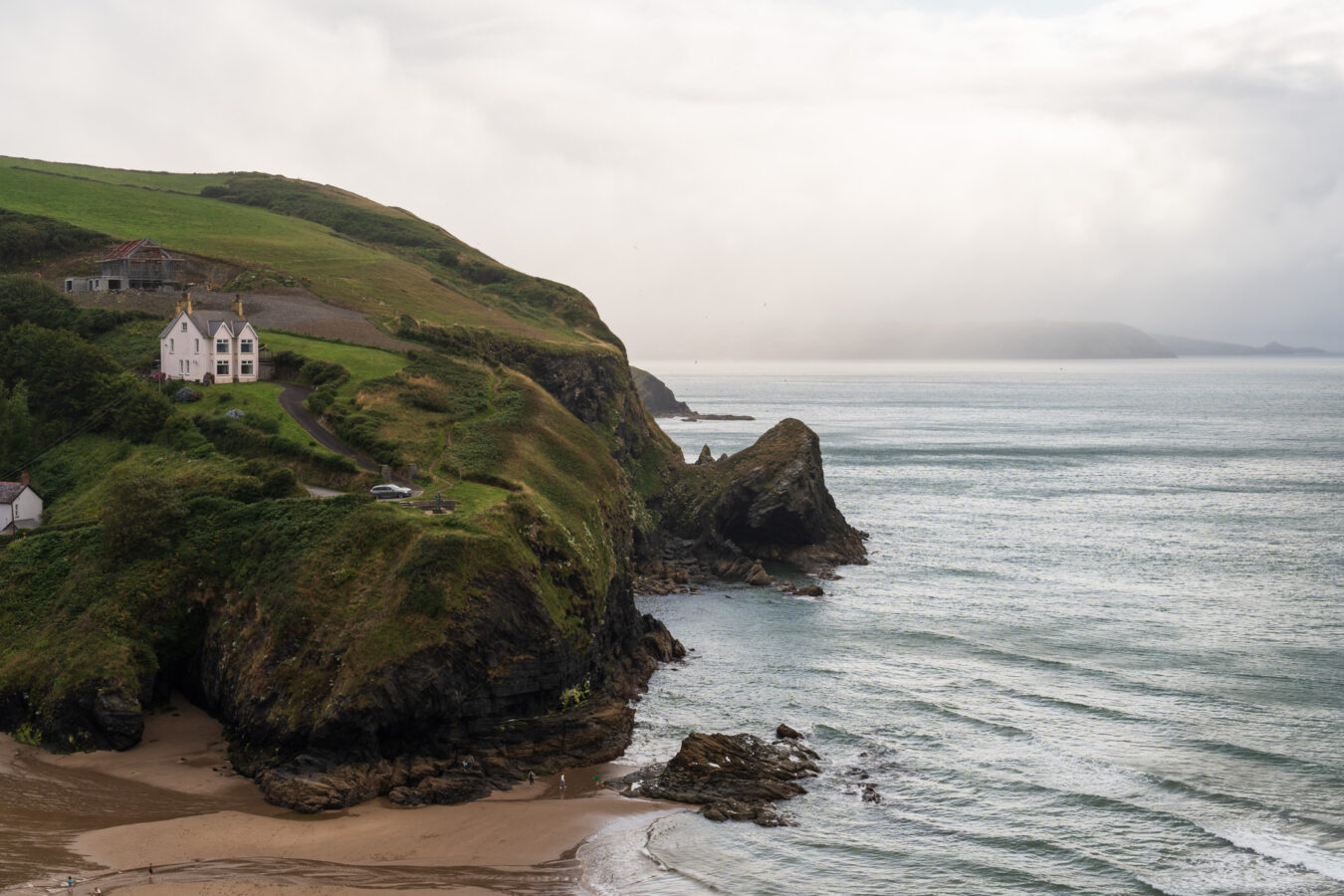

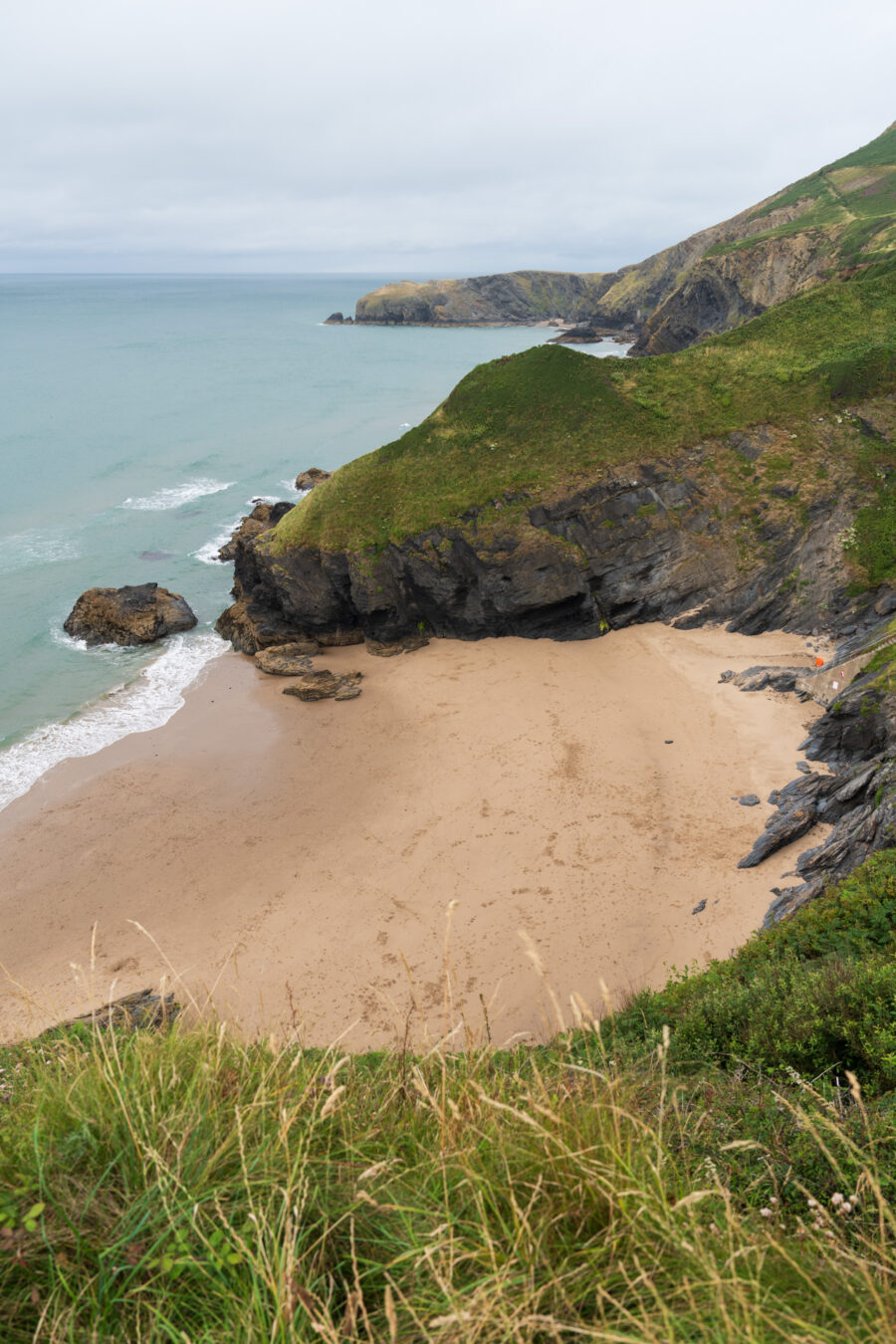
Though Llangrannog is very small, there are two really nice restaurants as well as a few pubs and a lovely ice-cream shop. And if swimming, kayaking and sunbathing aren’t your thing, the views from the cliffside walks are absolutely stunning. It’s fairly hard to get to without a car as bus services are long-winded and unpredictable, but that only adds to the feeling of delight when you reach this magical destination.
you must try the pizza!
Right in the centre of the village, in front of the car park, you’ll find Tafell a Tân, a small and cosy restaurant that serves excellent pizza. It comes highly recommended by We Travel Wales editor Mat, who hails from Italy. Indoor seating is limited, but takeaway is, of course, available.

#7 – New Quay
Welsh name: Cei Newydd
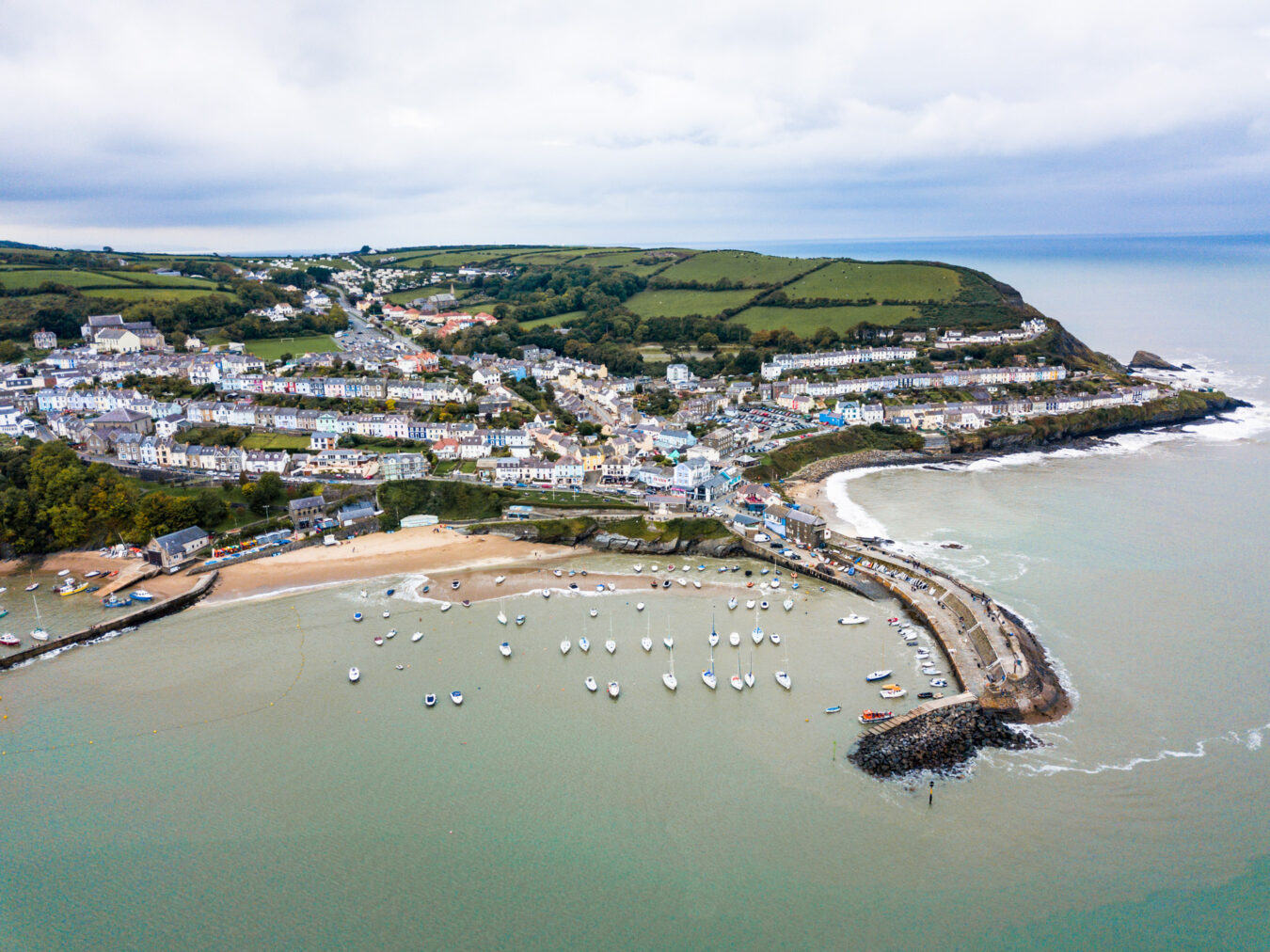
See New Quay on
Google Maps | Apple Maps
Public transport
- T5 bus (Aberystwyth – Haverfordwest)
I grew up in Mid-Wales, so Cardigan Bay and many of these lovely towns were regular summer holiday destinations for me and my friends all through my childhood. Likely the most popular was Newquay, and we’d all be jealous of whoever had visited most recently, as it was well understood that this seaside resort is one of the best places in the UK to see dolphins.
New Quay has a charming harbour and several pleasant, sandy beaches, and there is a great cliffside walk going southwards to Llangrannog. Despite being small there are plenty of nice pubs and restaurants. There’s also a really cool marine wildlife centre, from which a lot of conservation work is carried out, but which also boasts a visitor’s centre that’s sure to be a hit with families.

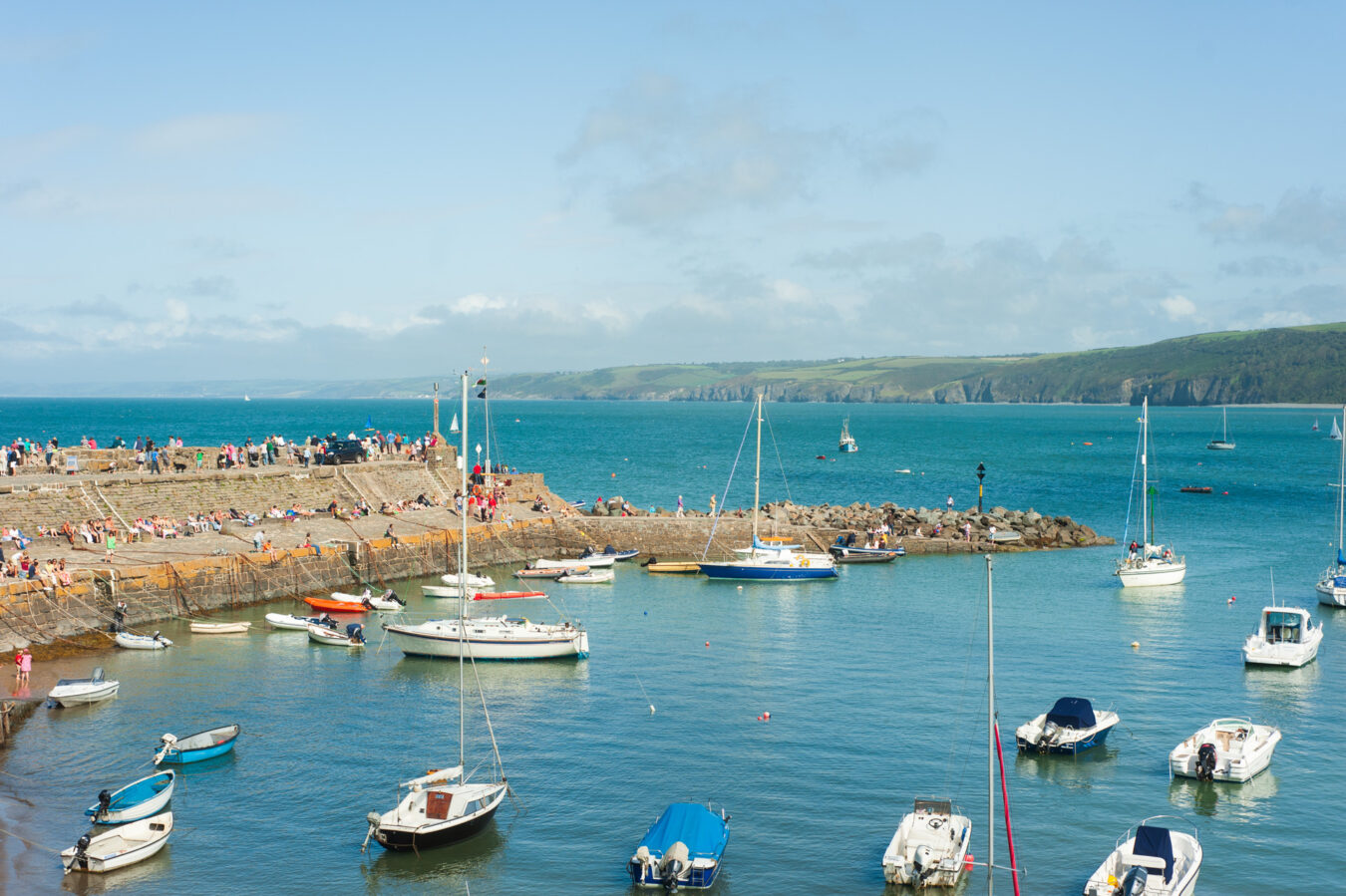
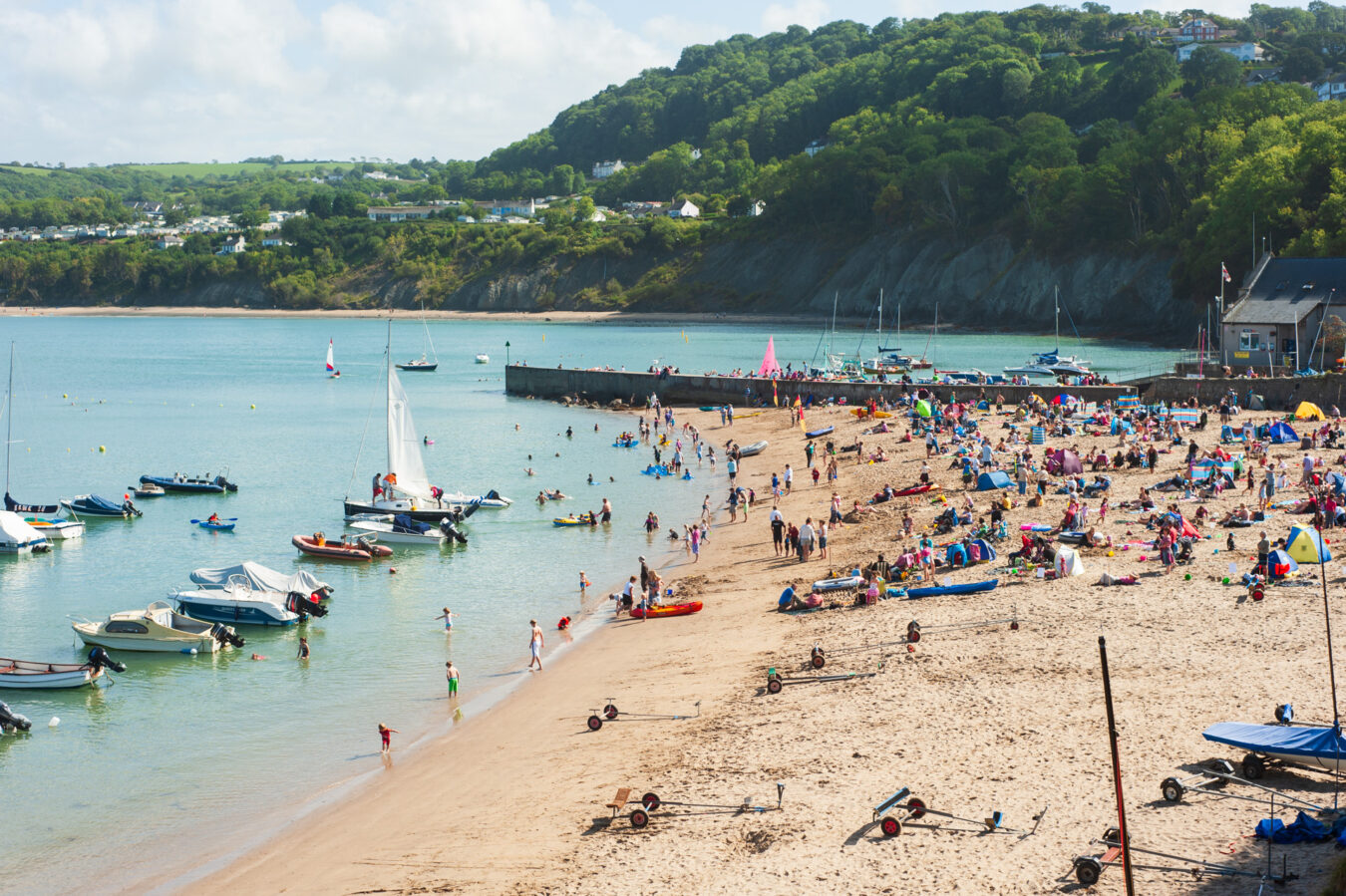
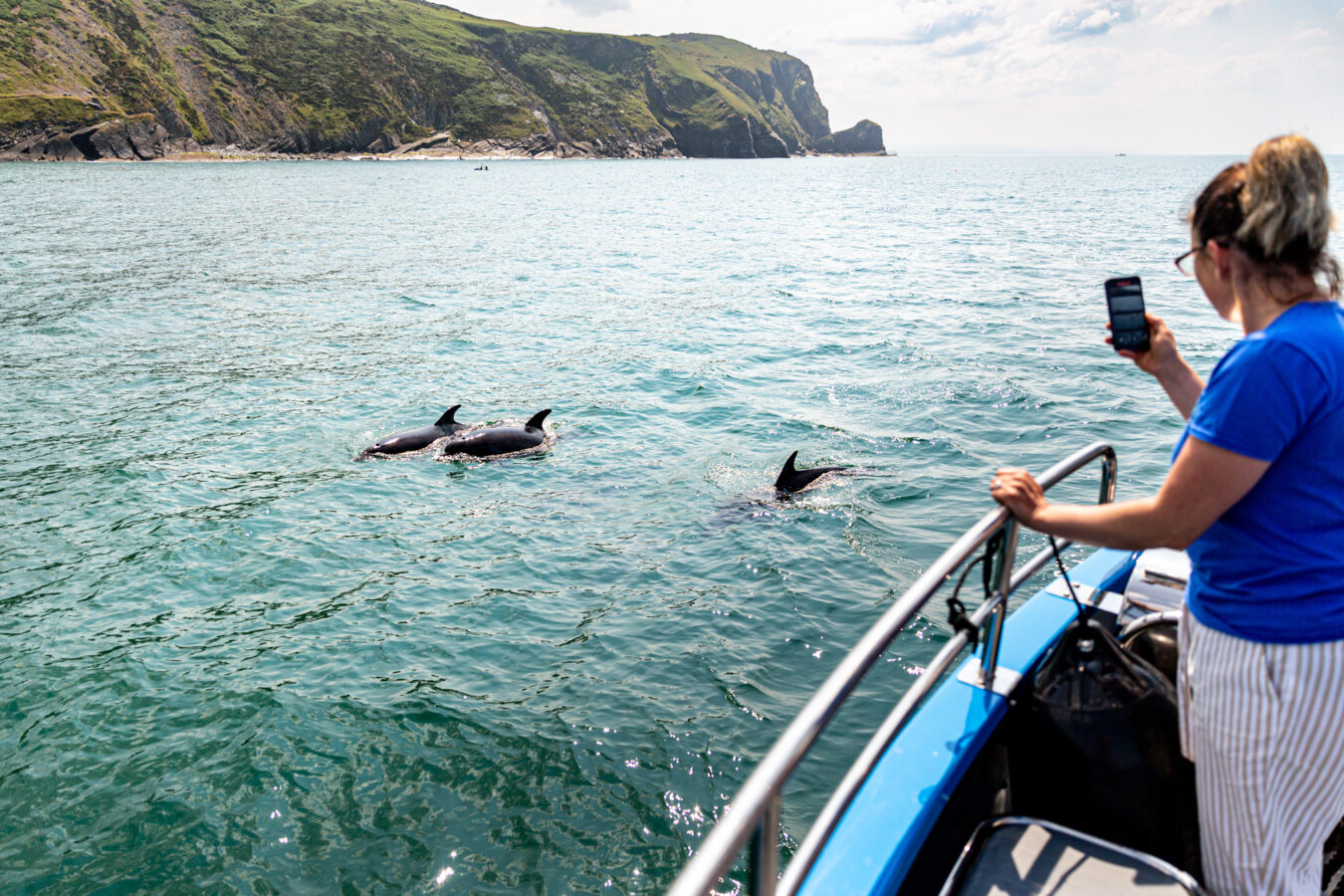
But the primary attraction of this town is definitely the famous boat trips. You’ll almost always get very cold and wet (so bring a raincoat!), but the feeling of peace you get circling the dramatic cliffs of the Bay on the gorgeous Irish Sea will more than make up for it. And if you’re lucky, you may spot porpoises, seals, or bottlenose dolphins.
#8 – Aberaeron
Welsh name meaning: mouth of the [river] Aeron
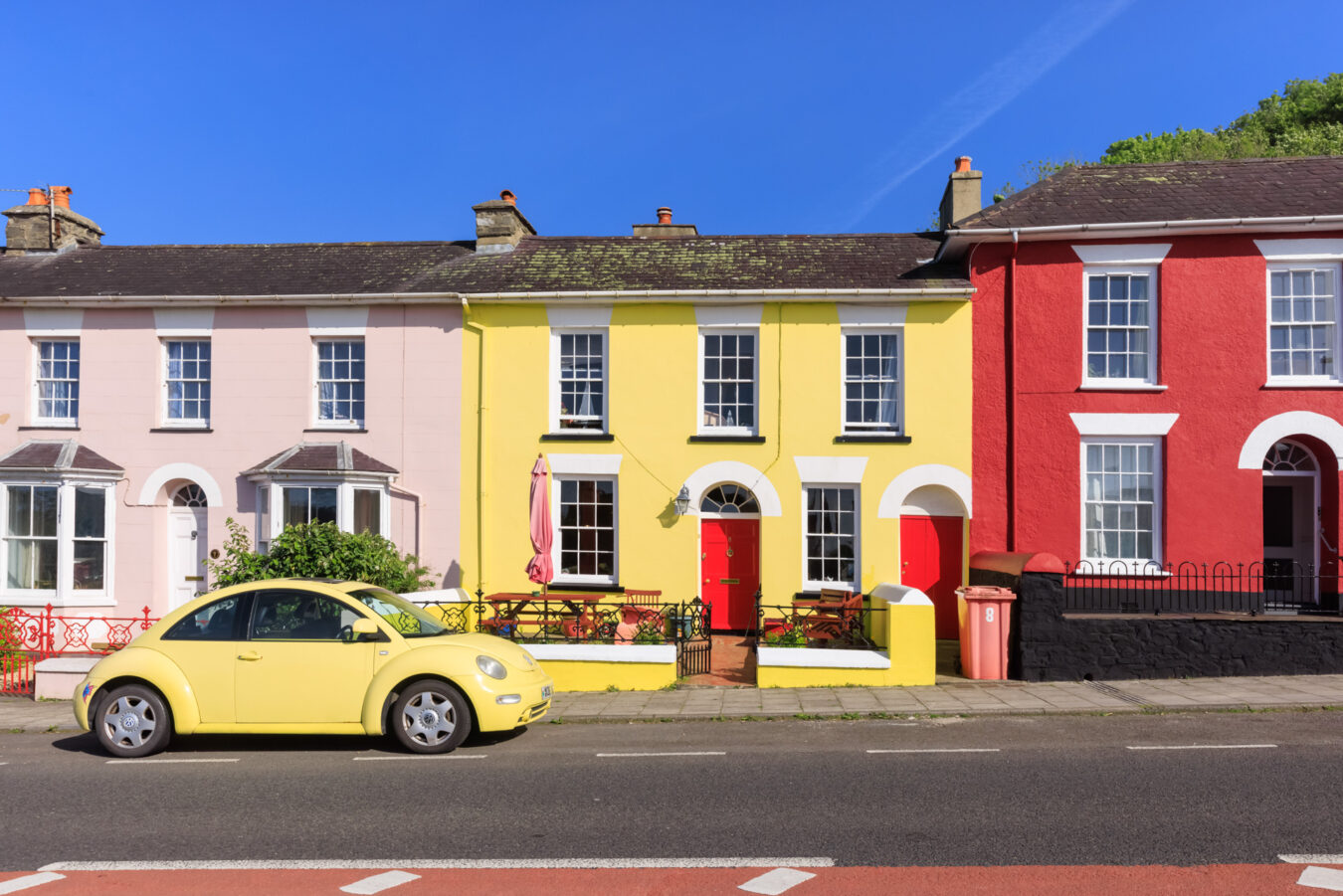
See Aberaeron on
Google Maps | Apple Maps
Public transport
- T1 bus (Aberystwyth – carmarthen)
- T5 bus (Aberystwyth – Haverfordwest)
The first time I visited Aberaeron as a little child, I asked my parents if we were in Balamory! If you haven’t seen it (how?!) Balamory is an iconic British children’s television programme set in a town in Scotland filled with brightly coloured houses. And Aberaeron really does look just like it, being famous for its multicoloured high street and store front that make you feel like you’ve jumped into a postcard.
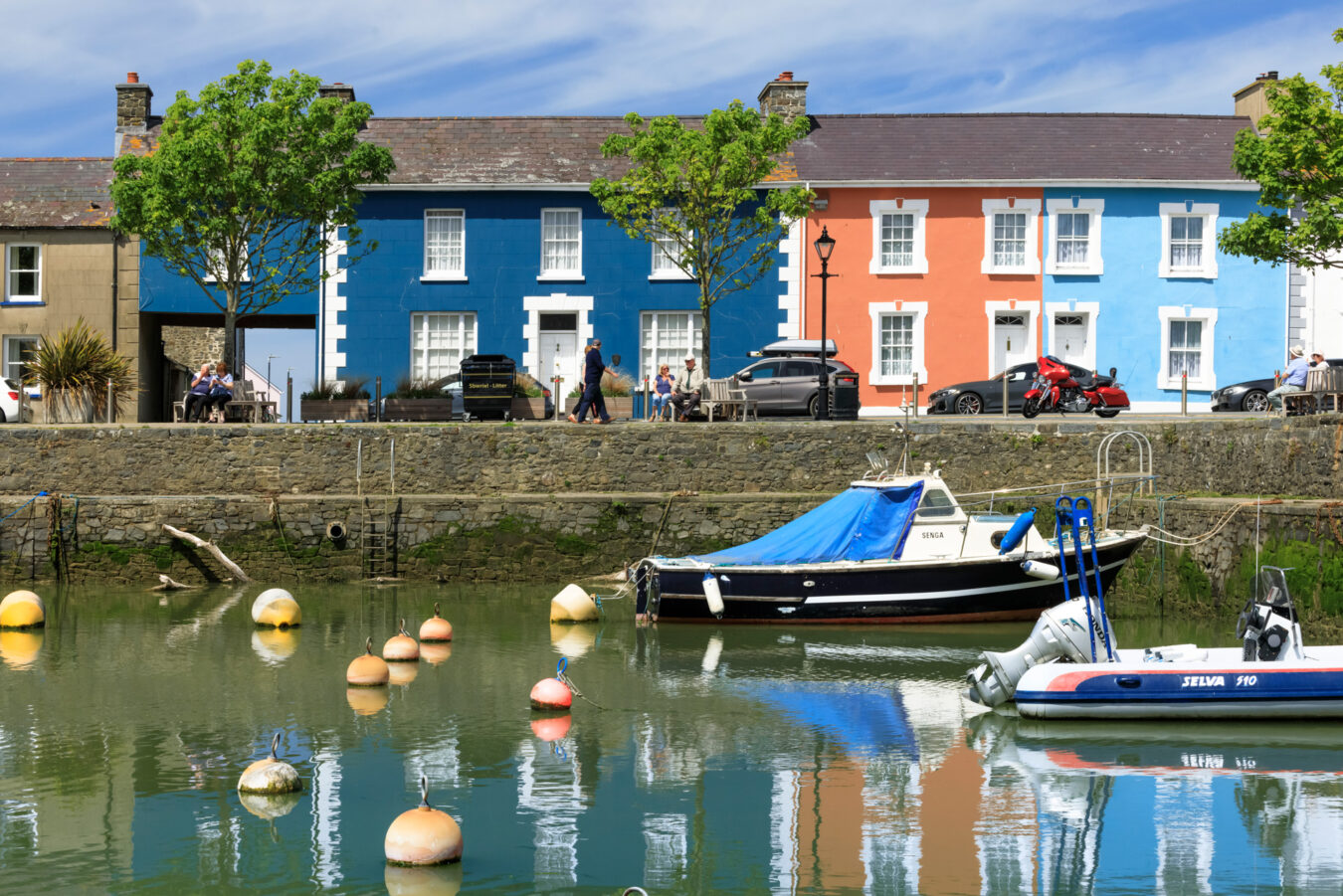

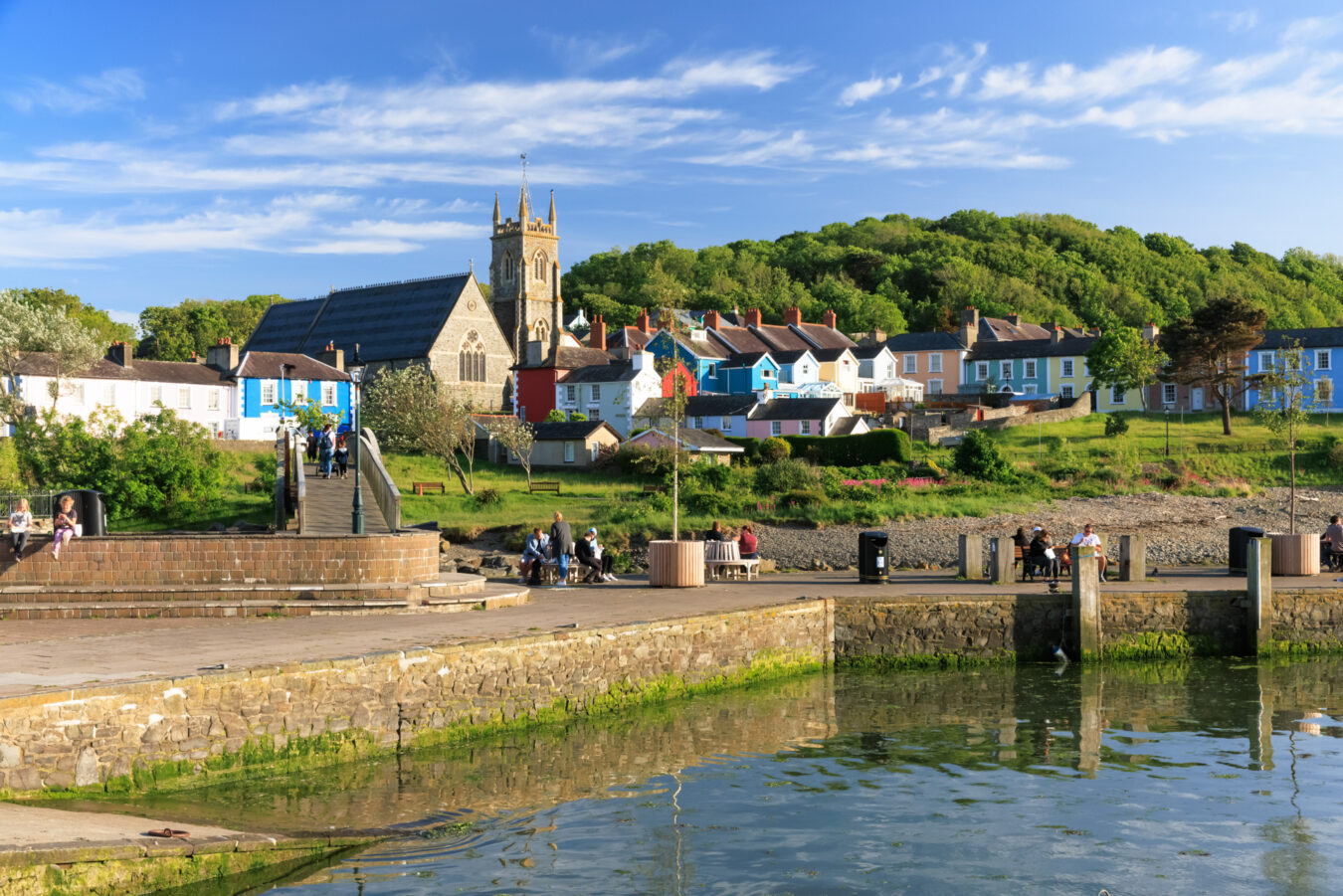
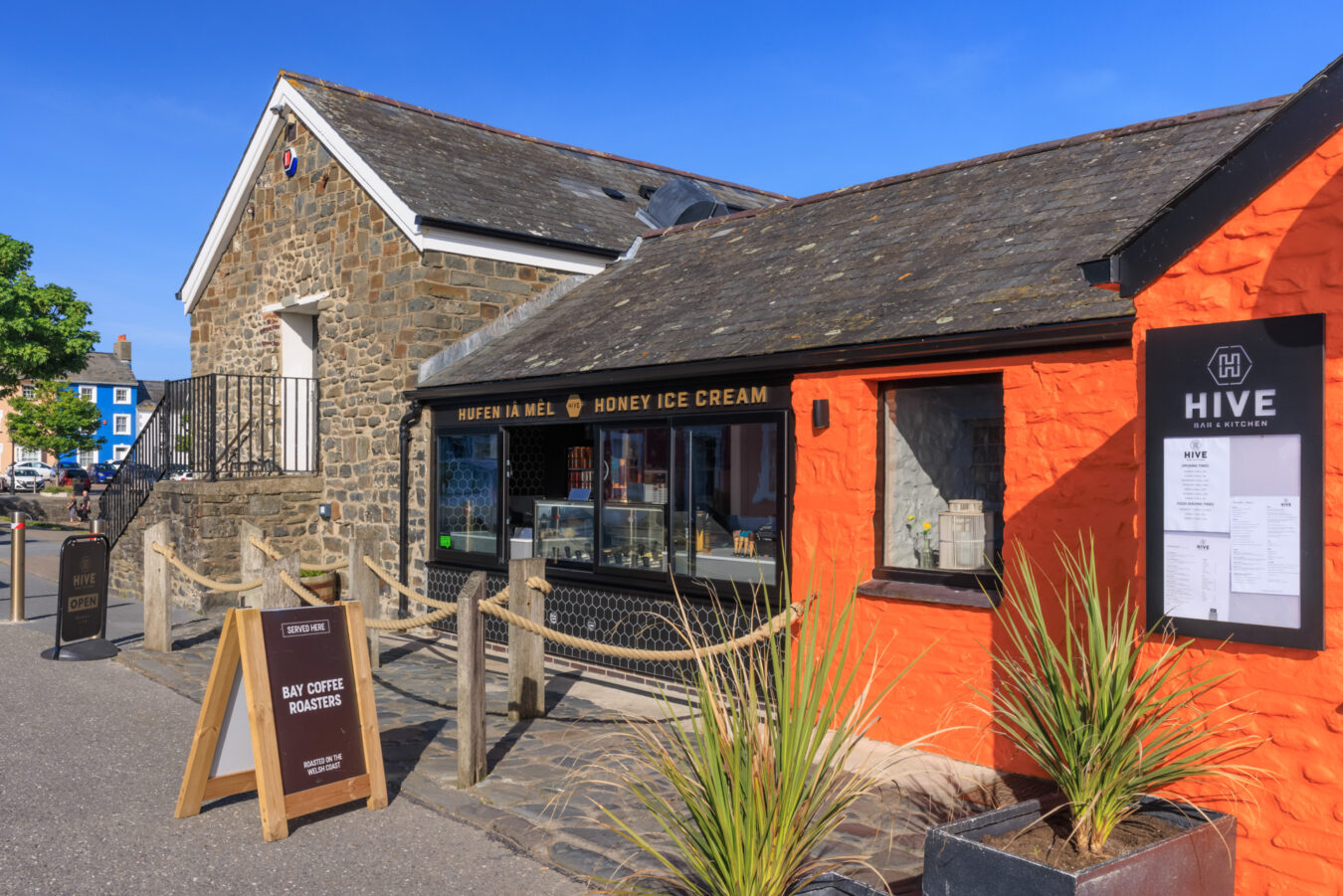
Though the beach here isn’t as sandy as at nearby locations like Llangrannog, the town itself is pretty enough to make up for it, so it’s well worth a visit. And aside from the colours, the architecture is Georgian style, which gives it a bit of different feel to other towns and villages along the bay. Browse the gift shops, get a delicious honey ice cream, and maybe even treat yourself to lunch at Y Seler, an elegant restaurant with a great view of the harbour.
#9 – Aberystwyth
Welsh name meaning: mouth of the [river] Ystwyth
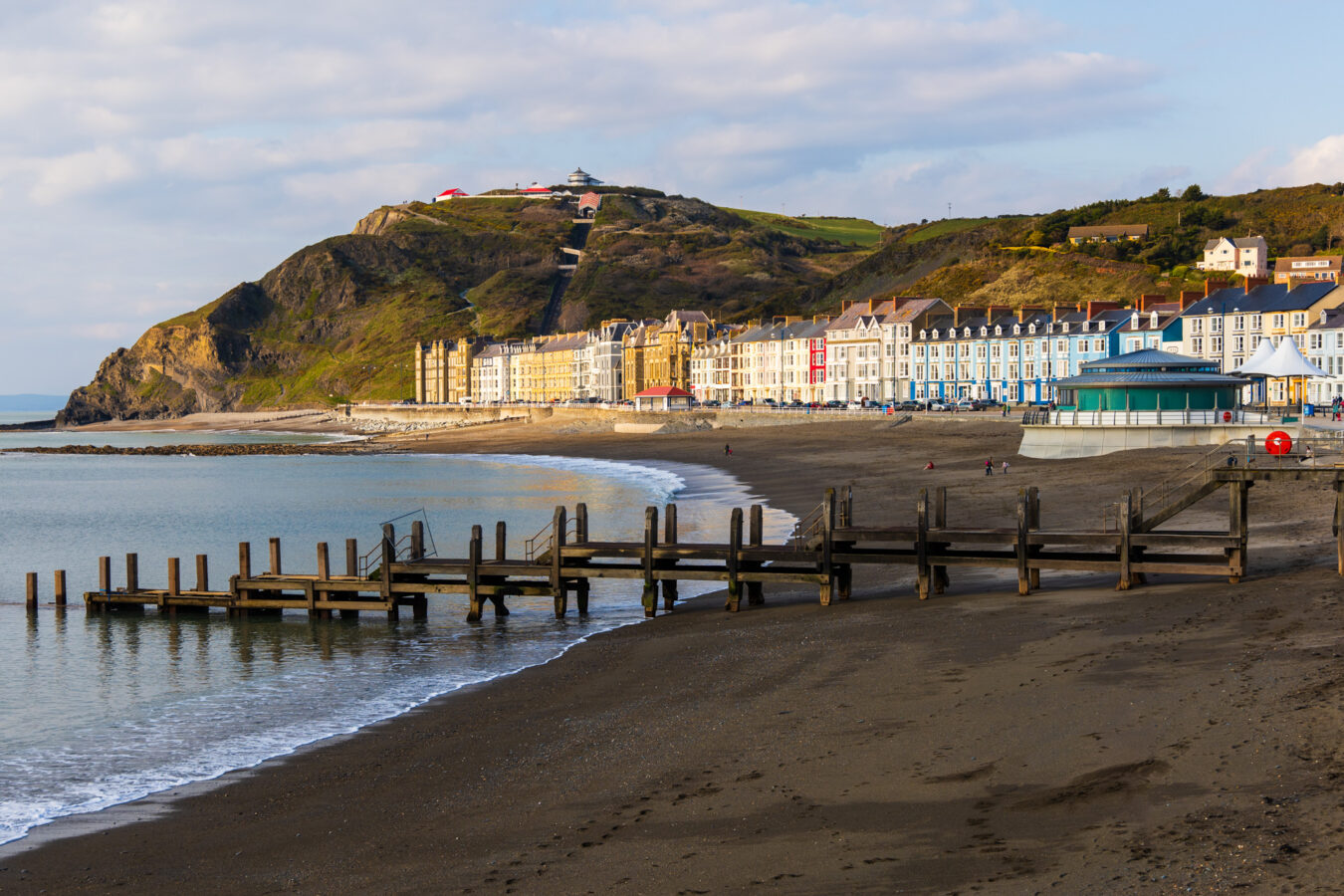
See Aberystwyth on
Google Maps | Apple Maps
Public transport
- cambrian train line (Pwllheli – birmingham)
- T1 bus (carmarthen)
- T1C (cardiff)
- T2 (Bangor)
- T5 (Haverfordwest)
Of all the towns on this list, Aberystwyth is your best bet if you want somewhere a bit busier, although its population is still only 15,000. Nevertheless, it’s an established seaside resort, with loads of shops and restaurants, frequent rail, coach and bus connections to various locations in Wales and England, and even an Arts Centre which is one of Wales’ largest.
Another point in favour of this bustling town for the history or literature buff is that the National Library of Wales is located here, Wales’ legal deposit library, which preserves a huge amount of valuable materials related to Welsh history. It’s well worth a visit if you’re interested in rare books and manuscripts. And the town is also home to Aberystwyth University, and the significant student population create a fun and relaxed vibe.
But don’t think Aberystwyth is all culture over nature – it has a lovely and popular beach of its own, within immediate reach of the town centre and all of its amenities. You can walk or take the iconic cliff railway to the top of Constitution Hill, or journey to Devil’s Bridge on the Vale of Rheidol steam train, which offers one of the most beautiful train rides in Wales. Last but not least, Aberystwyth is also overlooked by Penglais, a gorgeous woodland nature reserve that in spring is carpeted by bluebells.


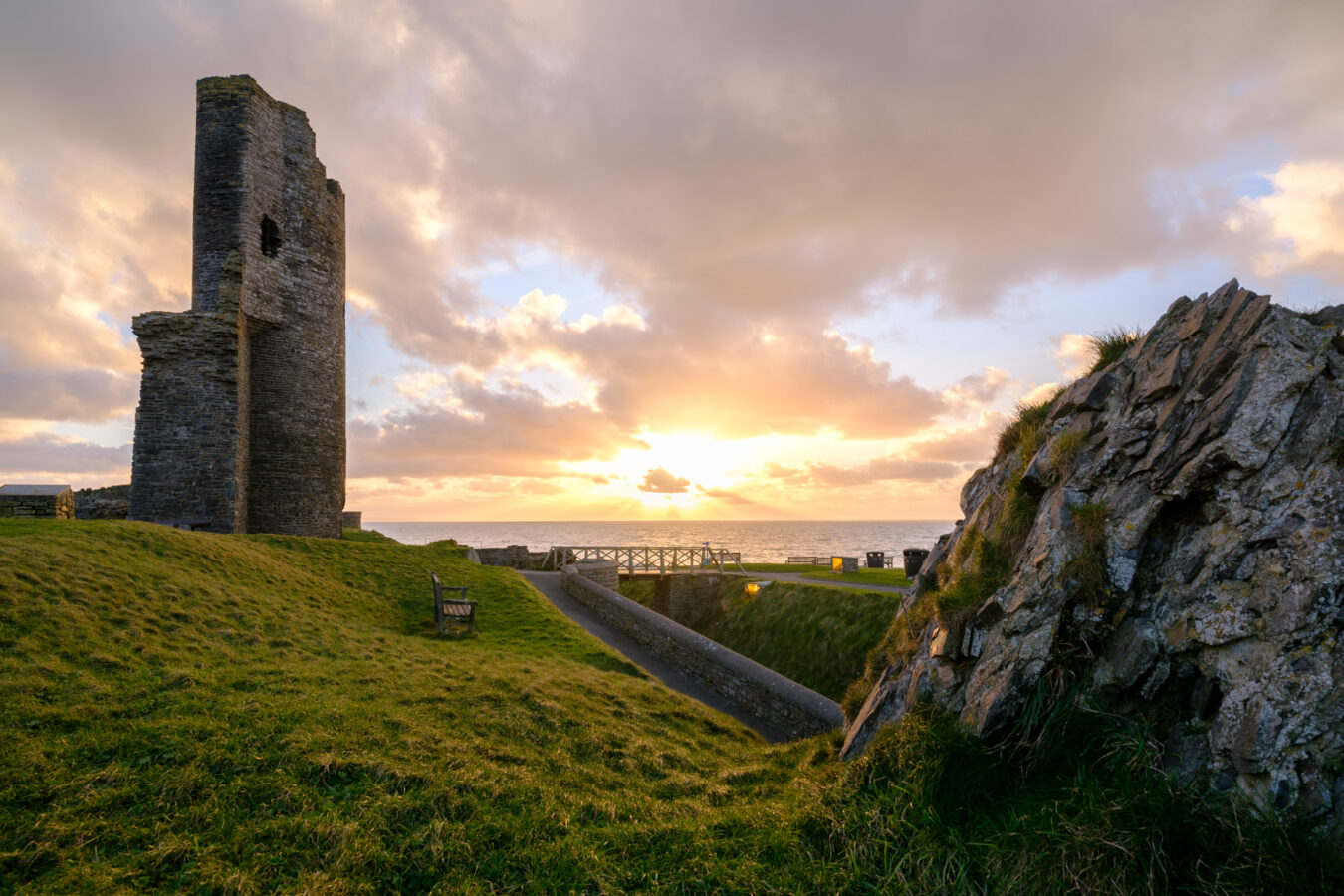
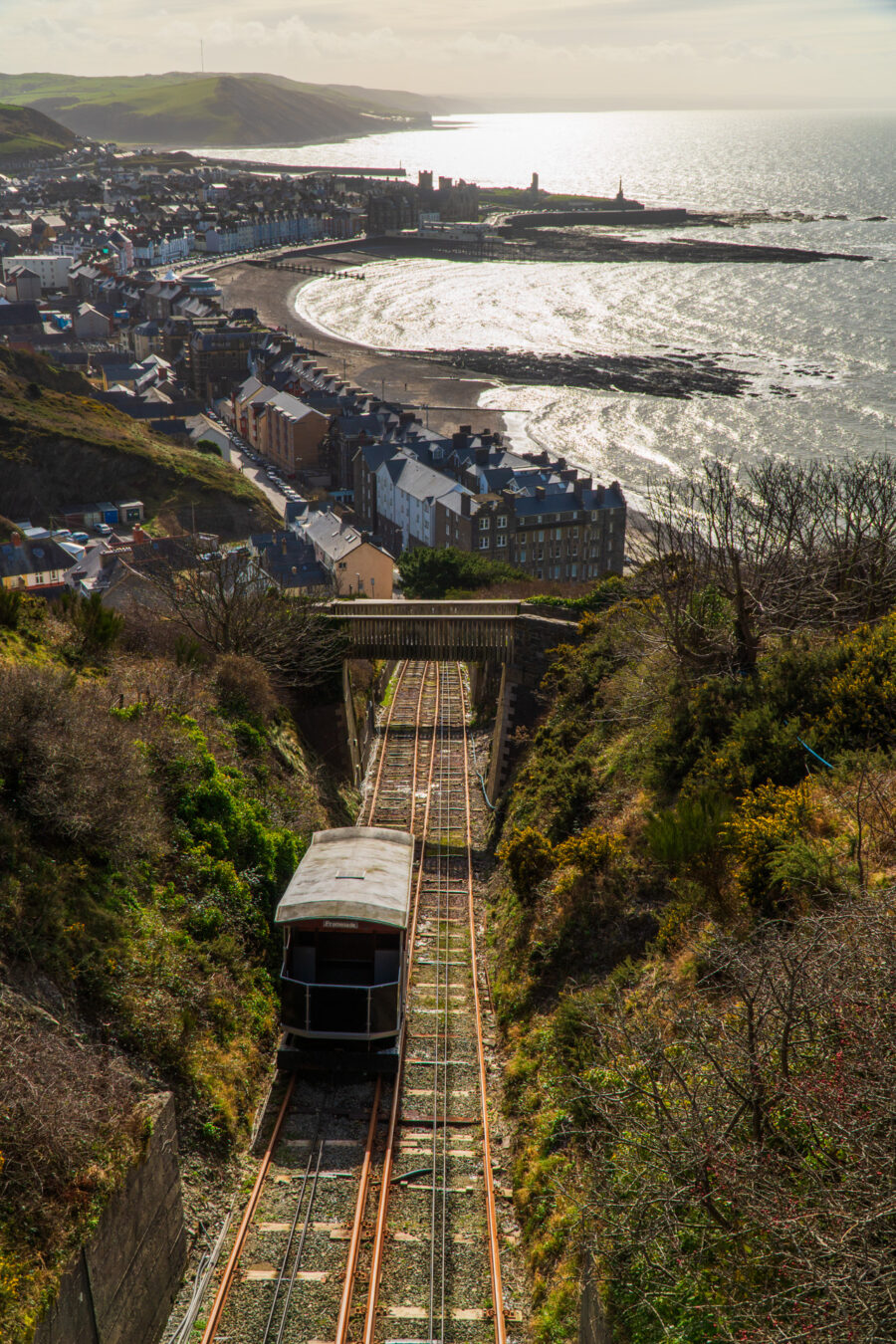
As I mentioned, this town is well-connected by rail and bus, so once you’re in Aberystwyth, the rest of Cardigan Bay is yours to explore. But if you can get there using a car, you should take the opportunity and drive in from mid-Wales. The journey from Rhayader to Aberystwyth is jaw-dropping.
A UNIQUE SPECTACLE
In the Autumn and Winter months, a spectacular natural phenomenon brings hundreds of visitors and locals on the promenade near sunset, where they can witness thousand of starlings coming from the countryside and flying in synchronisation across the sky, creating beautiful shapes, before resting under the pier for the night.
#10 – Borth
Welsh name: Y Borth
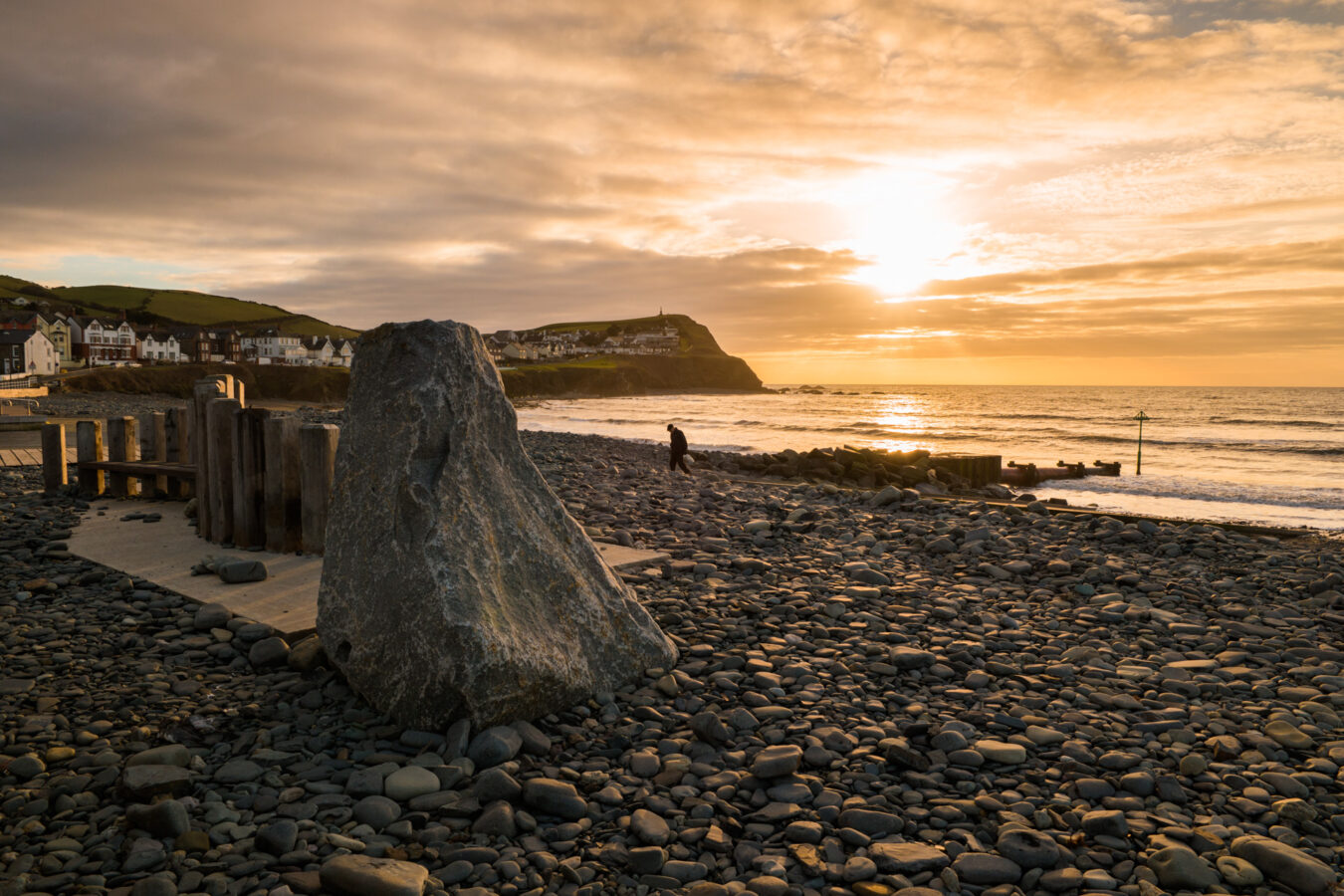
See Borth on
Google Maps | Apple Maps
Public transport
- cambrian train line (Pwllheli – birmingham)
- 512 bus (aberystwyth)
I actually had never been to Borth until a year ago – but it quickly stole my heart with its gorgeously dramatic long, sandy beach, on which, at low tide, you can see the remains of an ancient forest, preserved in peat. There is a Welsh legend about a kind of ‘Welsh Atlantis’ called Cantre’r Gwaelod, a beautiful kingdom which was destroyed by floods due to negligence, and the forest remains at Borth have been suggested as evidence that this folk myth has some kind of factual basis.
You can also enjoy this unique beach slightly further up the coast at Ynyslas, worth a visit on its own merits – it’s famous for its lovely sand dunes in which a fair few rare animals and plants can be found, and there’s a visitor centre open in the summer months where you can learn more about the dunes. There’s a nice walk from Borth up to Ynyslas which is only a mile and a half long, a sub-section of the larger Ceredigion Coast Path.
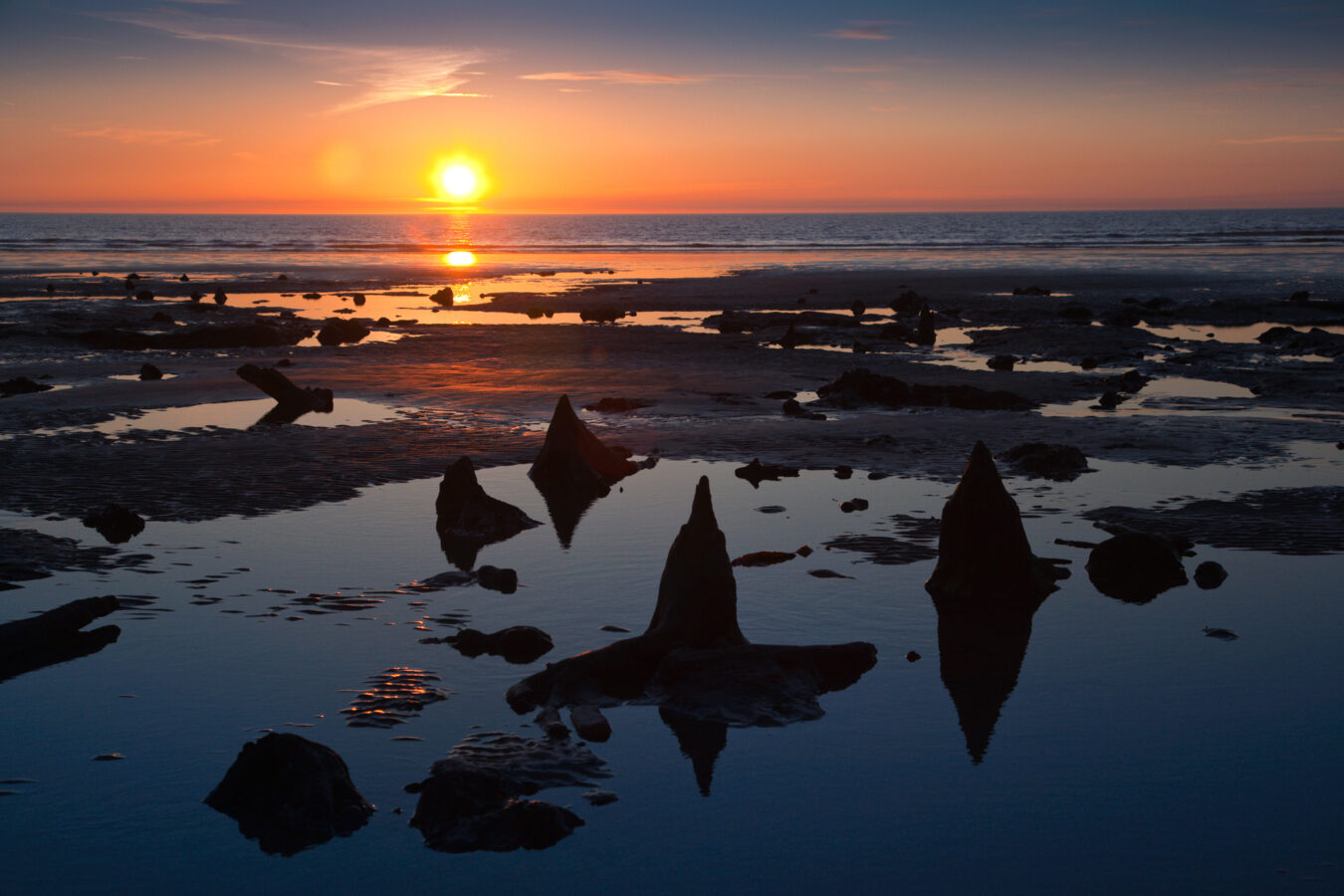
Borth is connected by rail to Birmingham and Shrewsbury, so it’s not hard to reach. It also takes only 15 minutes on the train to get from Borth to Aberystwyth.
ONE FOR CINEMA GOERS
Libanus 1877 is a restaurant and cinema, featuring two screens that can each accommodate about 60 people. It has a lovely, relaxed atmosphere, and if you book one of the armchairs on the side, you’ll enjoy the comfort of your home combined with the charm only an independent cinema can offer.
Useful Information
If you’re planning your journey by public transport, you can use traveline.cymru to plan your itinerary. You can also visit the Transport for Wales website.
To learn more about travelling in Wales by public transport, check out my dedicated guide.
Cardigan Bay is Wales’ crowning glory, and one of the most unmissable areas of natural beauty in the whole of the UK. Did any of these towns along its coast strike your fancy? Let us know in the comments below.

